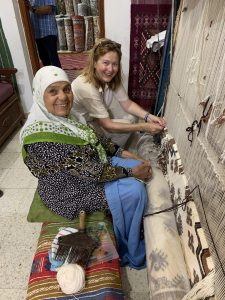
Visiting Tunisia is even easier and lovelier than it sounds. You’ve heard about the beaches, but the history is a draw as well. You’ll not find nicer olive oil anywhere. And if you’re really nice they’ll let you stitch a rug.
This year the international conference on human rights (RightsCon) was held here in the capital and people came from around the world – including my dear friend Cata from Colombia.
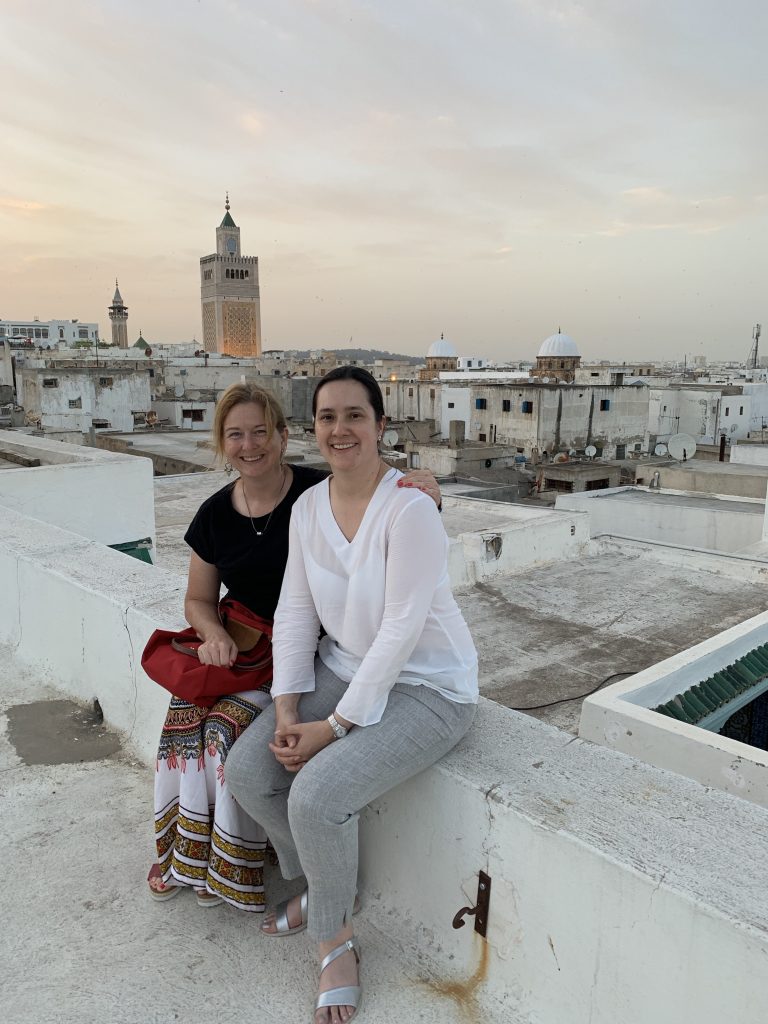
Other Arabs call the country Green Tunisia. And it is green – there are vineyards, olive groves, dates, abundant bougainvillea, and the eastern end of the Atlas mountains, Wikipedia tells me. There are also wide flat hot plains, and the northern part of the Sahara Desert. Where I live, the sea is our horizon, and while it can be really hot and humid in July and August, the rest of the year has a much nicer range.
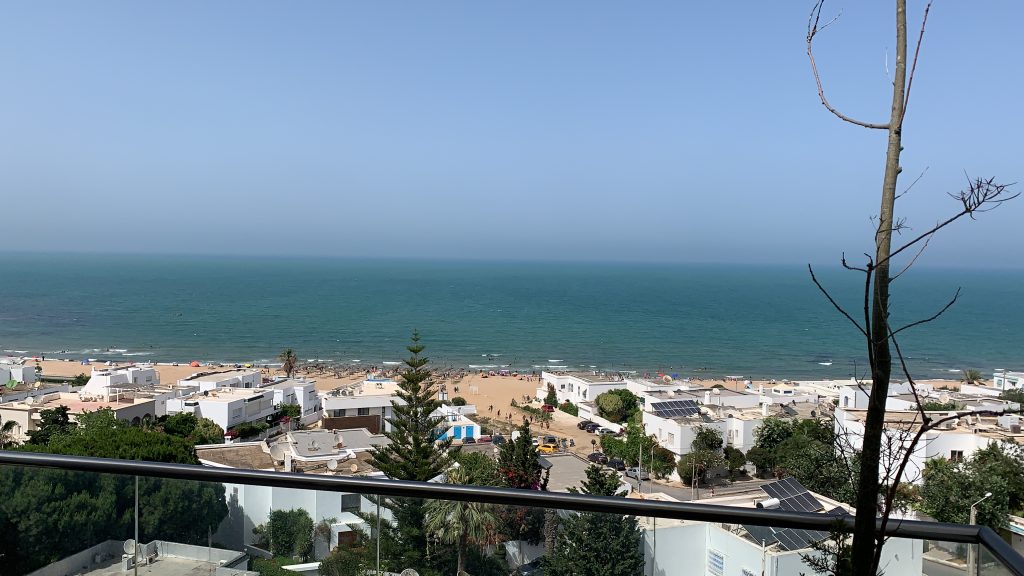
History is truly alive here. The Berbers were the first inhabitants. After that I likely have some details wrong (since our tour was in French!) but as I understood it, the Phoenicians established an empire based in Carthage in the 7th to 3rd centuries BC. A legendary queen called Dido was said to have told the local tribe she wanted to purchase an amount of land that could be covered by an oxhide. She cut the hide into strips and stretched it out around to make the claim that she’d bought much, much greater.
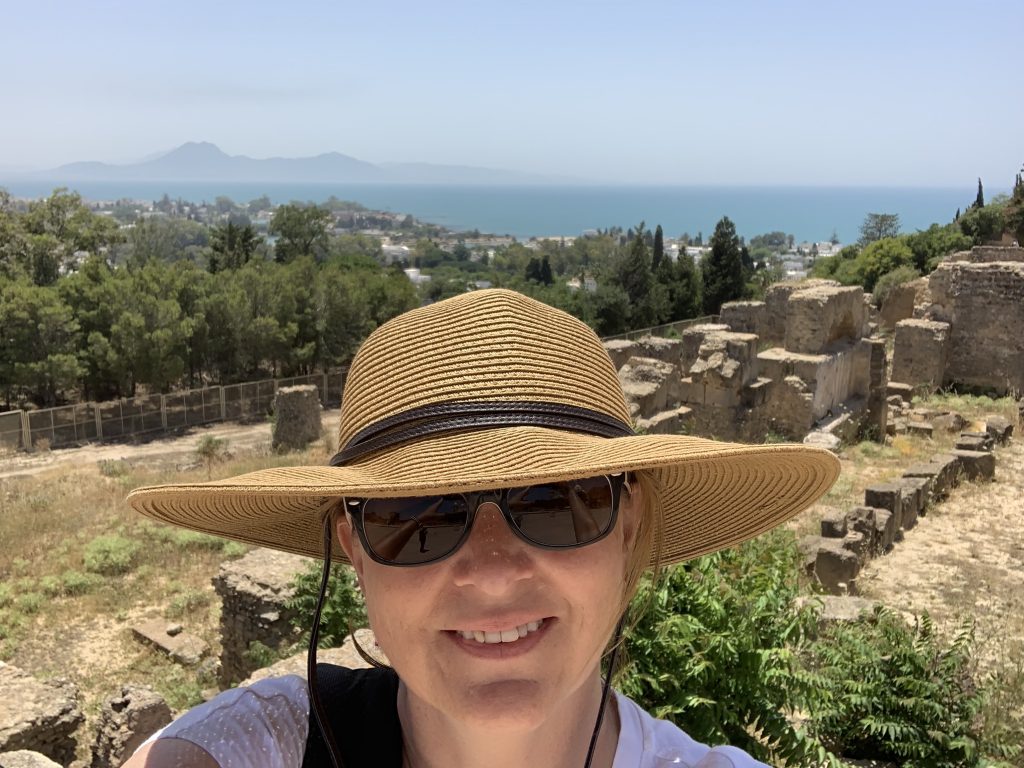
The Romans came and beat up on the Carthaginians, building “Roman Carthage” on top of what they found. There are well-preserved ruins right in the capital, including the Roman baths, below.
The Bardo Museum is an absolute gem. It’s striking how much they’ve managed to save, refurbish, and display, in a gorgeous setting. Complete mosaics were brought from other sites in the country to the capital, and where there are missing tiles, the museum used a very subtle technique so the viewer can still make them out. There are a lot of images of women in mosaics and in stone, including the only known female centaurs. There’s also a depiction of two men pouring wine. Tunisia’s wine is great, so I can see how that would make it into the hall of fame!
At the Carthage historical site there is also a Catholic church, Sant Louis, with the requisite patron saint. Looking at his statue I saw the familiar fleur-de-lis from my hometown, on his crown and robe and in the marble inside the sanctuary. His sarcophagus at the site was notable for its influences from all over – Buddhism is especially notable.
Outside I got to be the perch for this lovely creature.
We journeyed to El Djem, which is nearly the size of the Roman Coliseum, but without many tourists. Like, twelve, including us.
And to Kairouan, which dates from a somewhat later dynasty. In addition visiting the world’s fourth oldest mosque, we were guests at a beautifully restored home where… well, let’s just say, rugs were sold.
Obviously, it wouldn’t be a Tunisia post if I didn’t include something about cats and blue doors. So, feast your eyes:
Come soon, and come often!
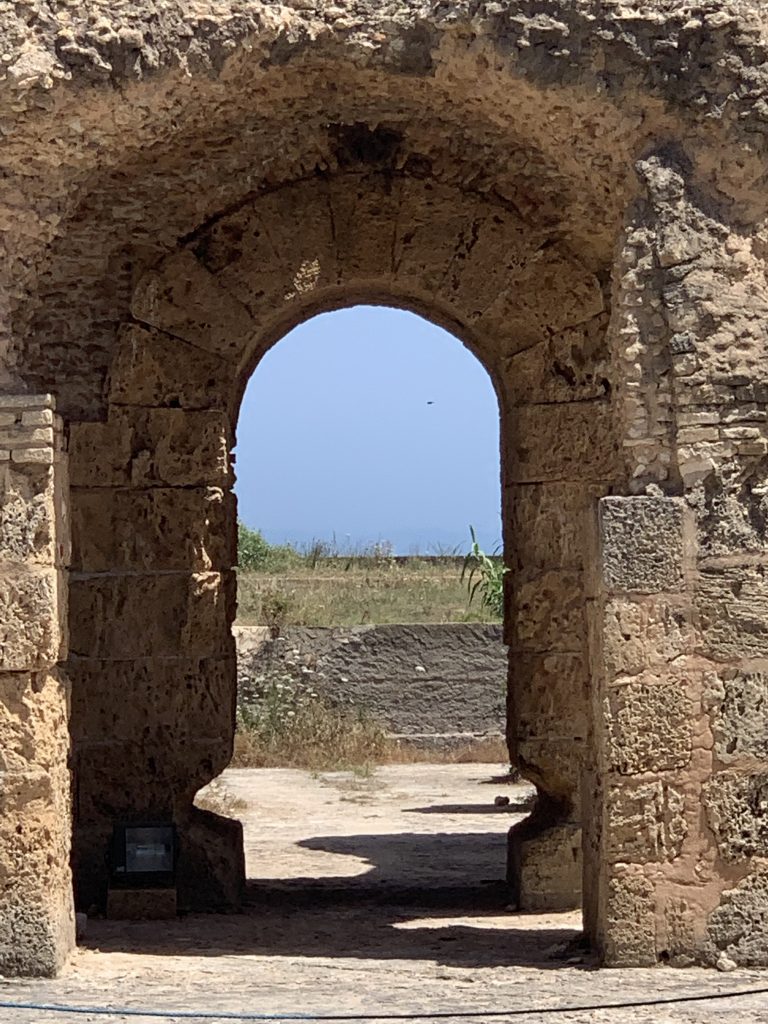
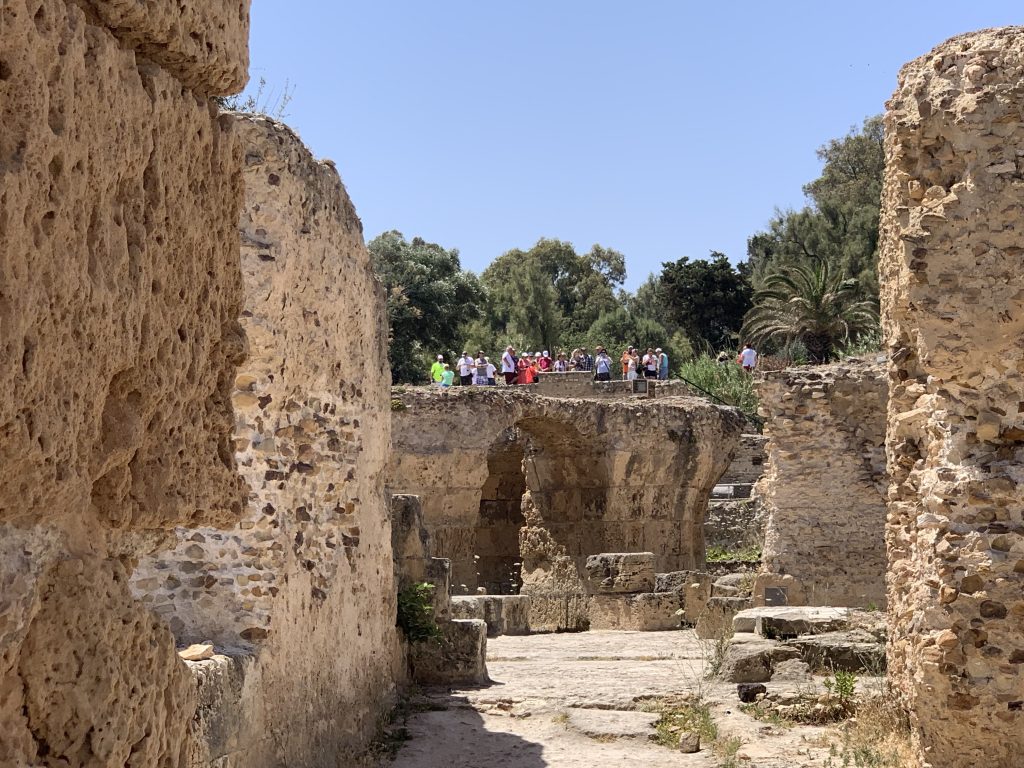
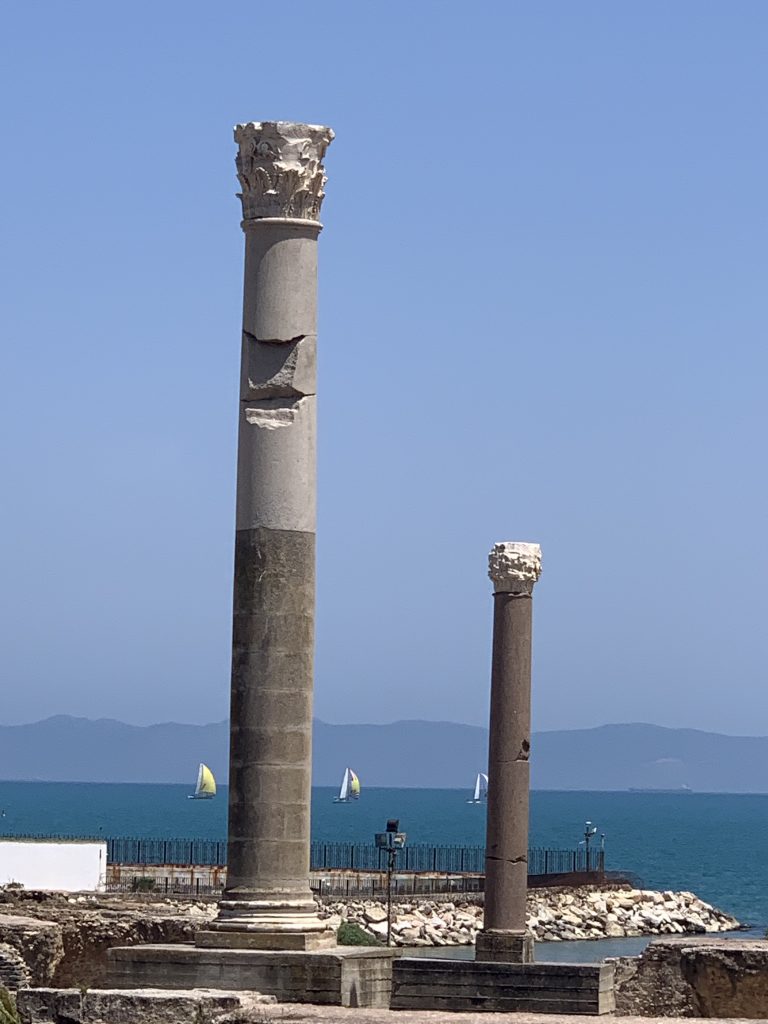
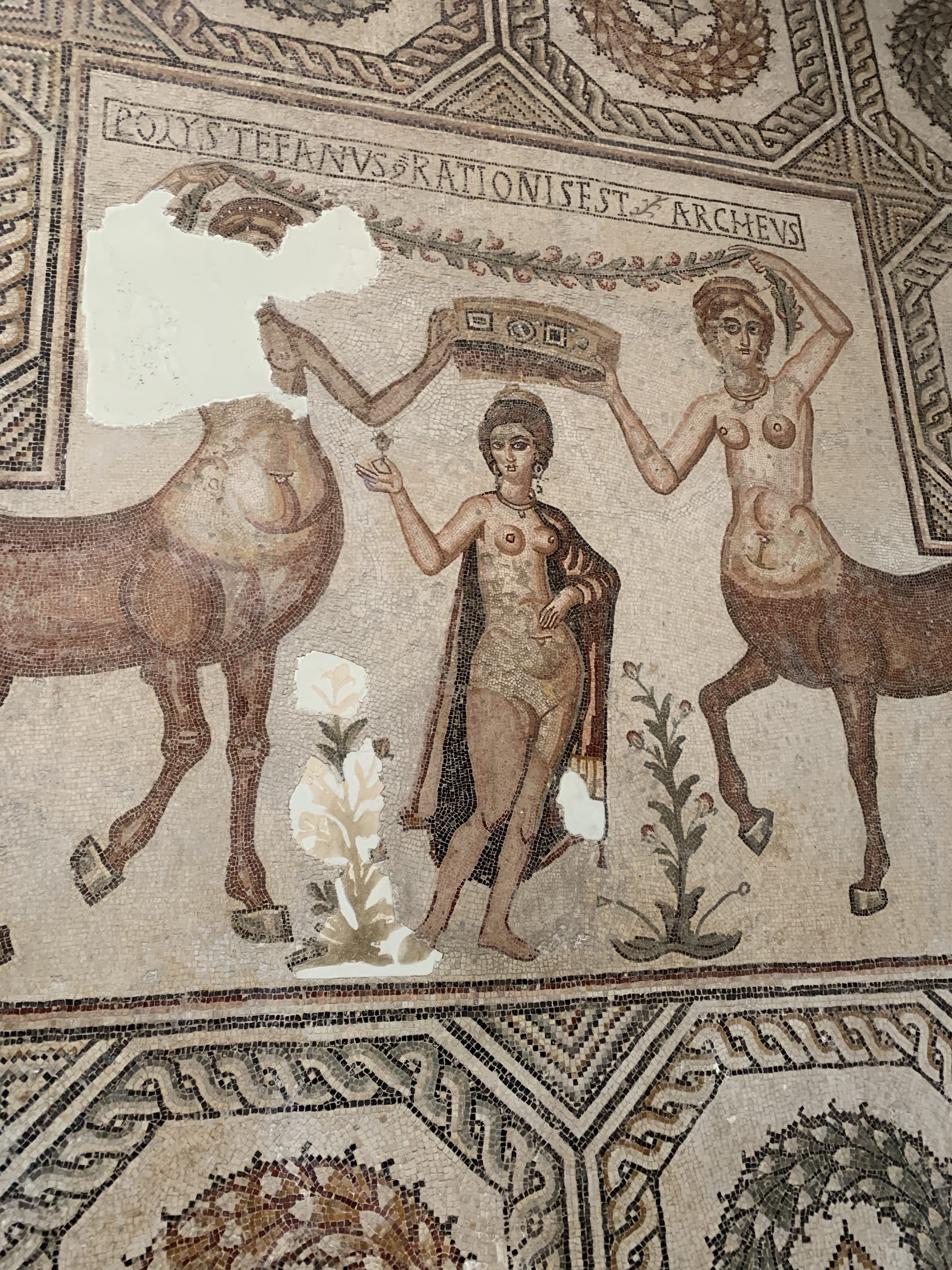
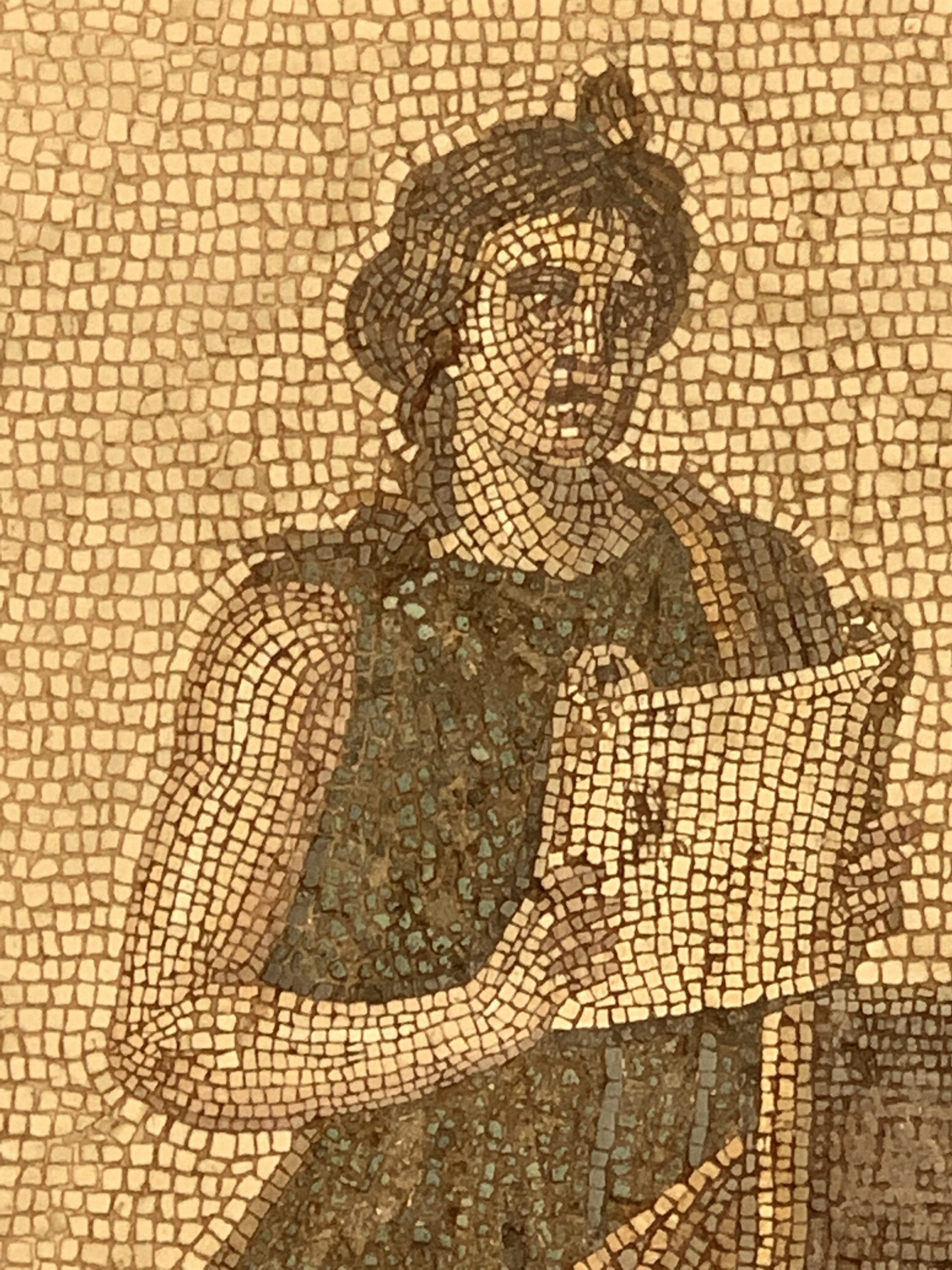
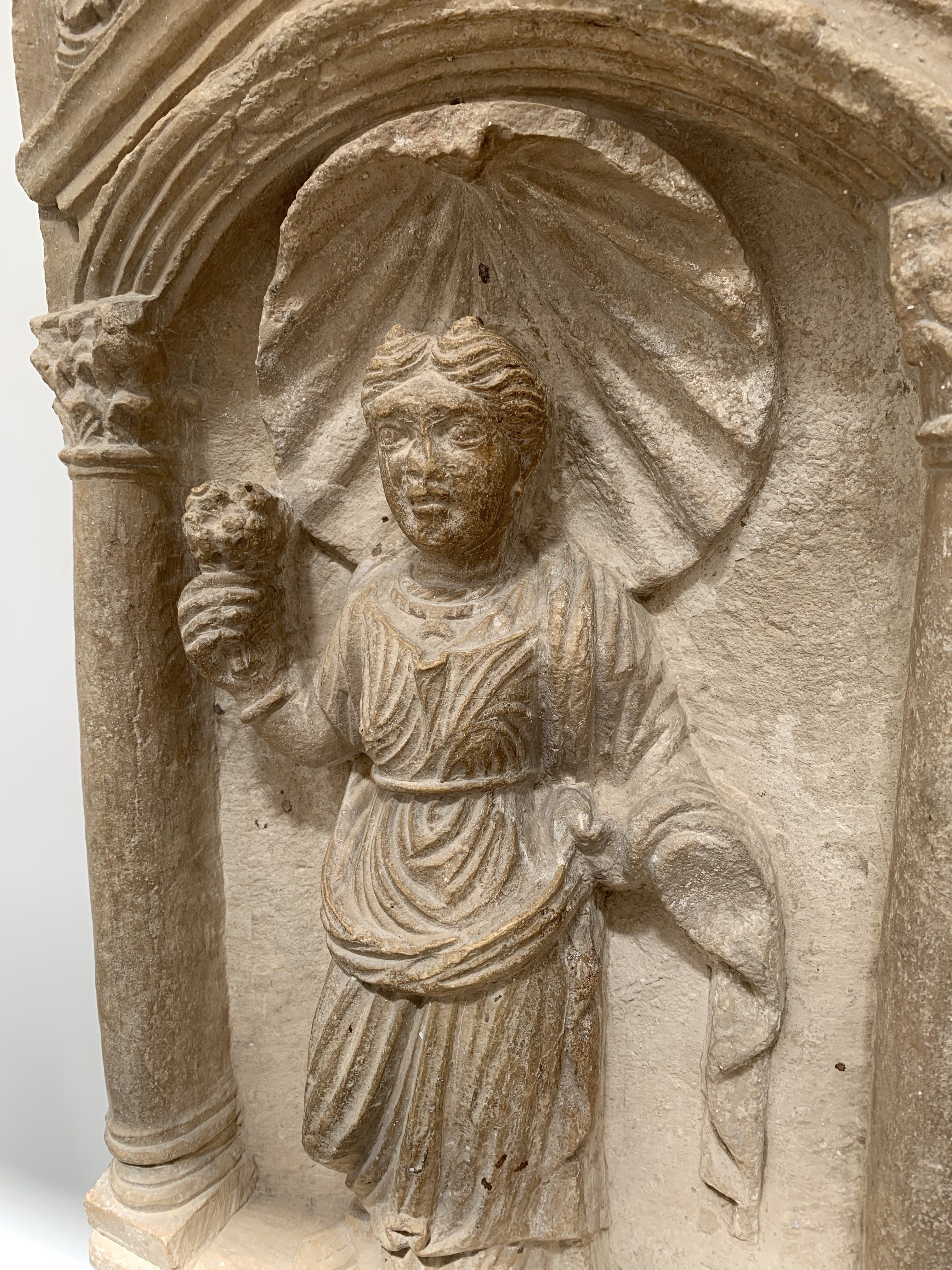
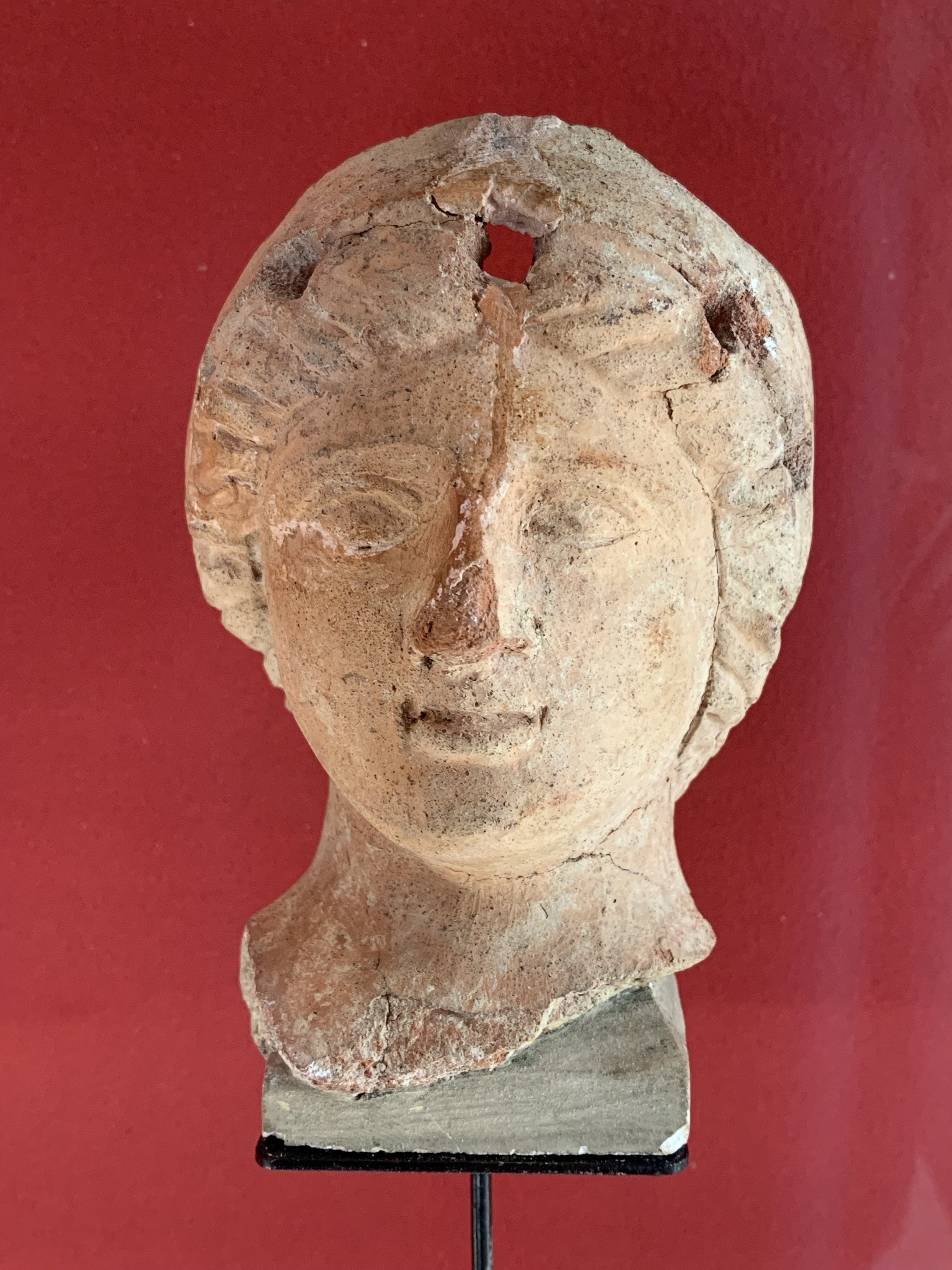
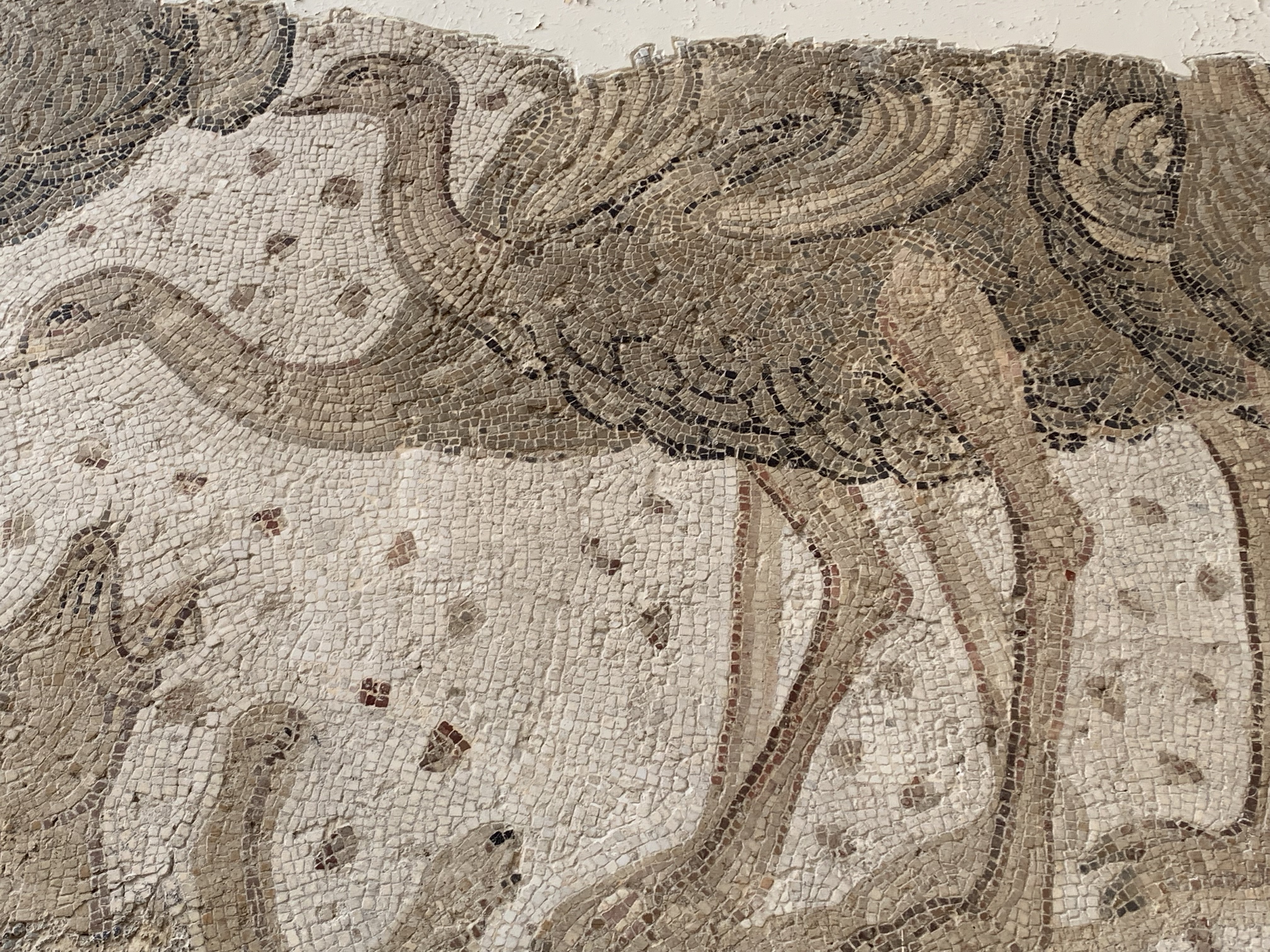
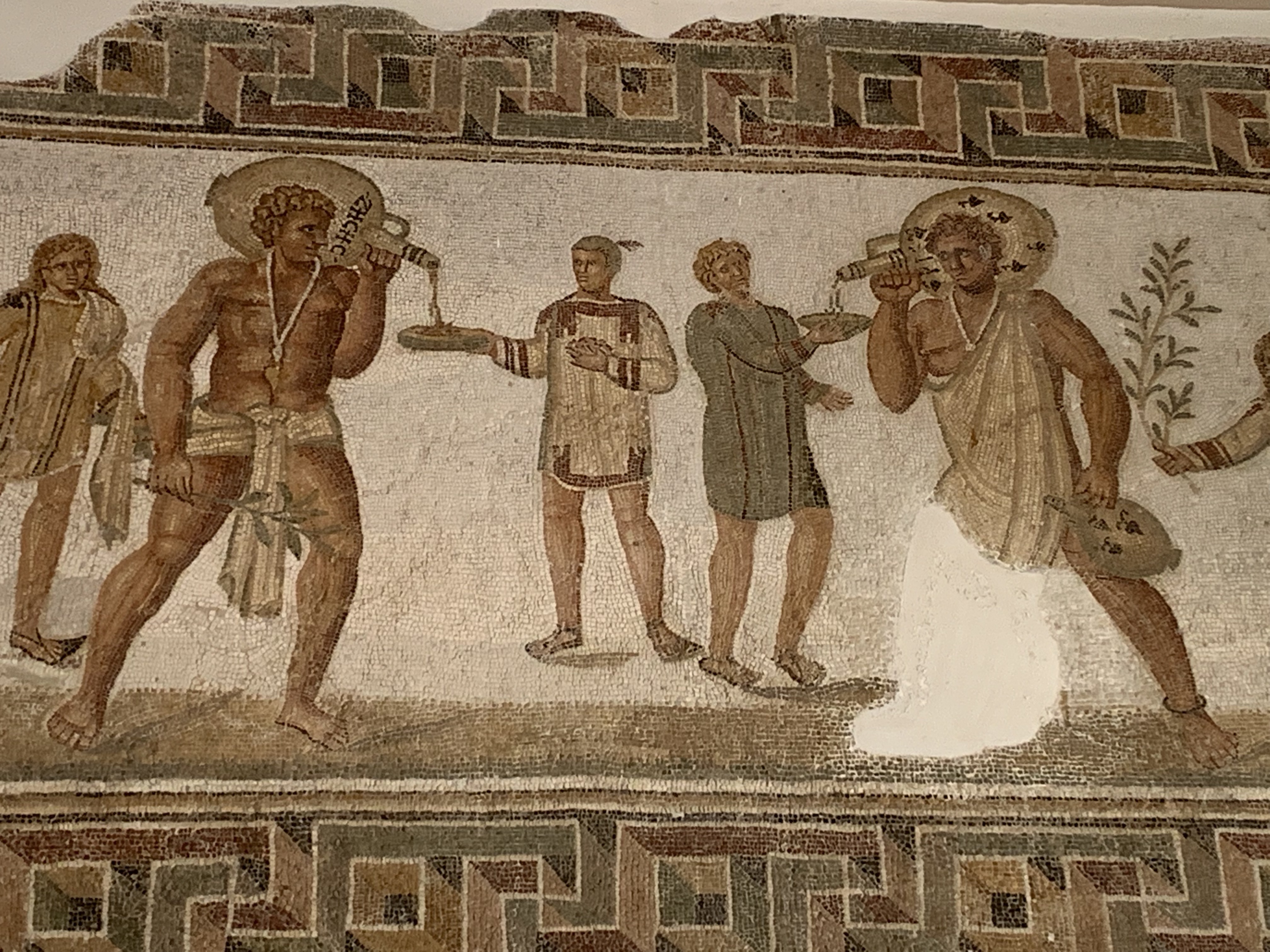
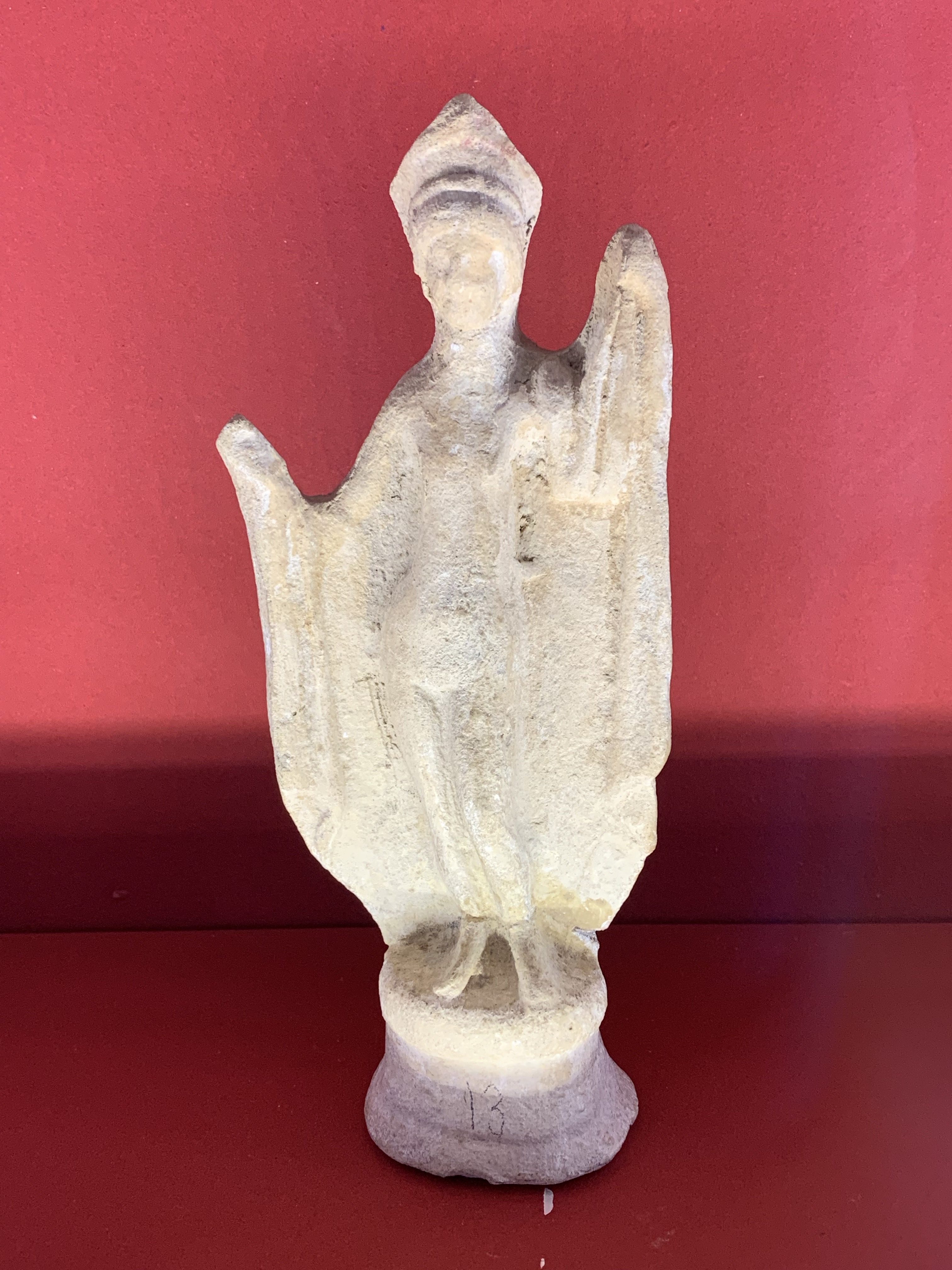
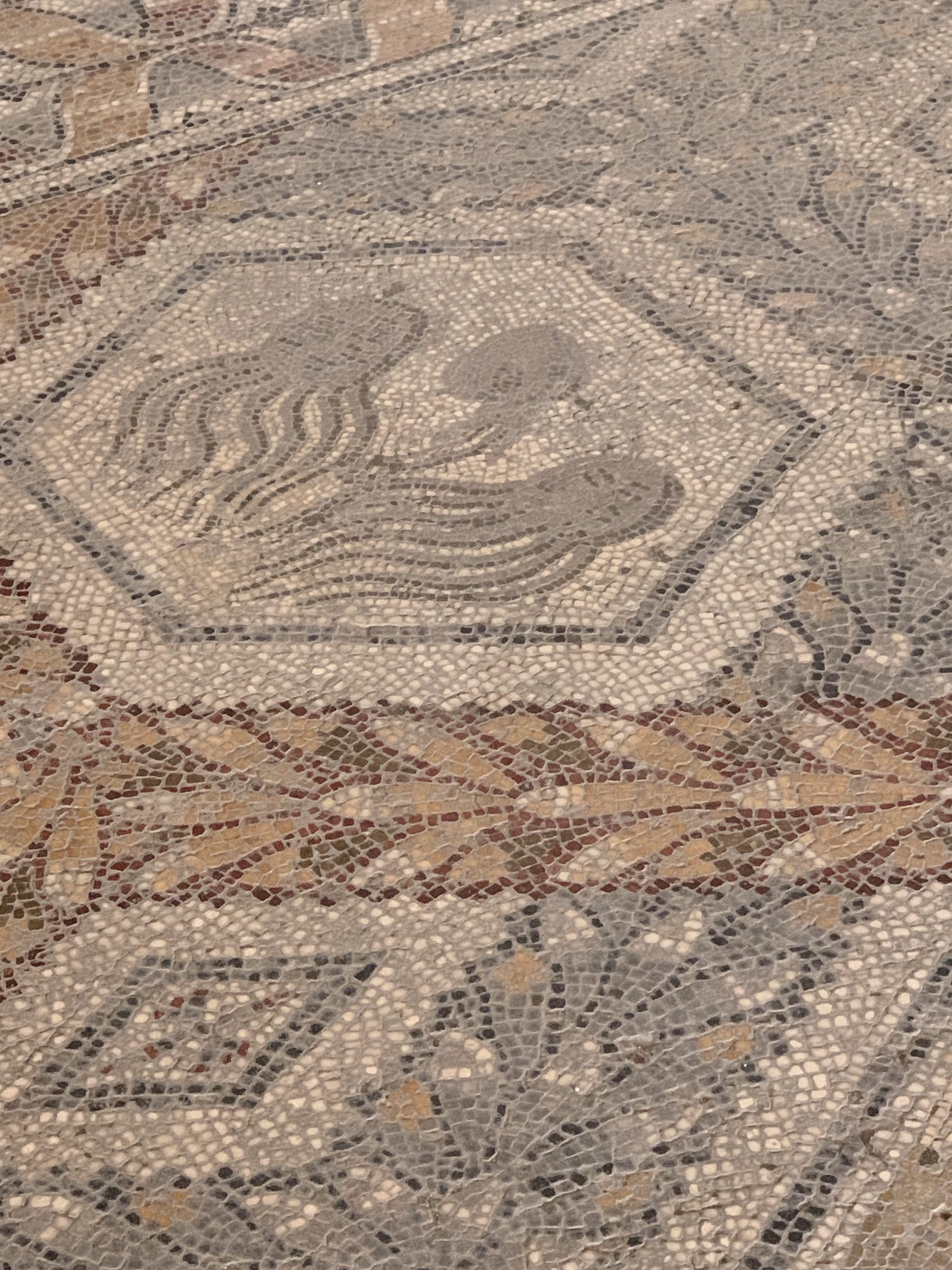
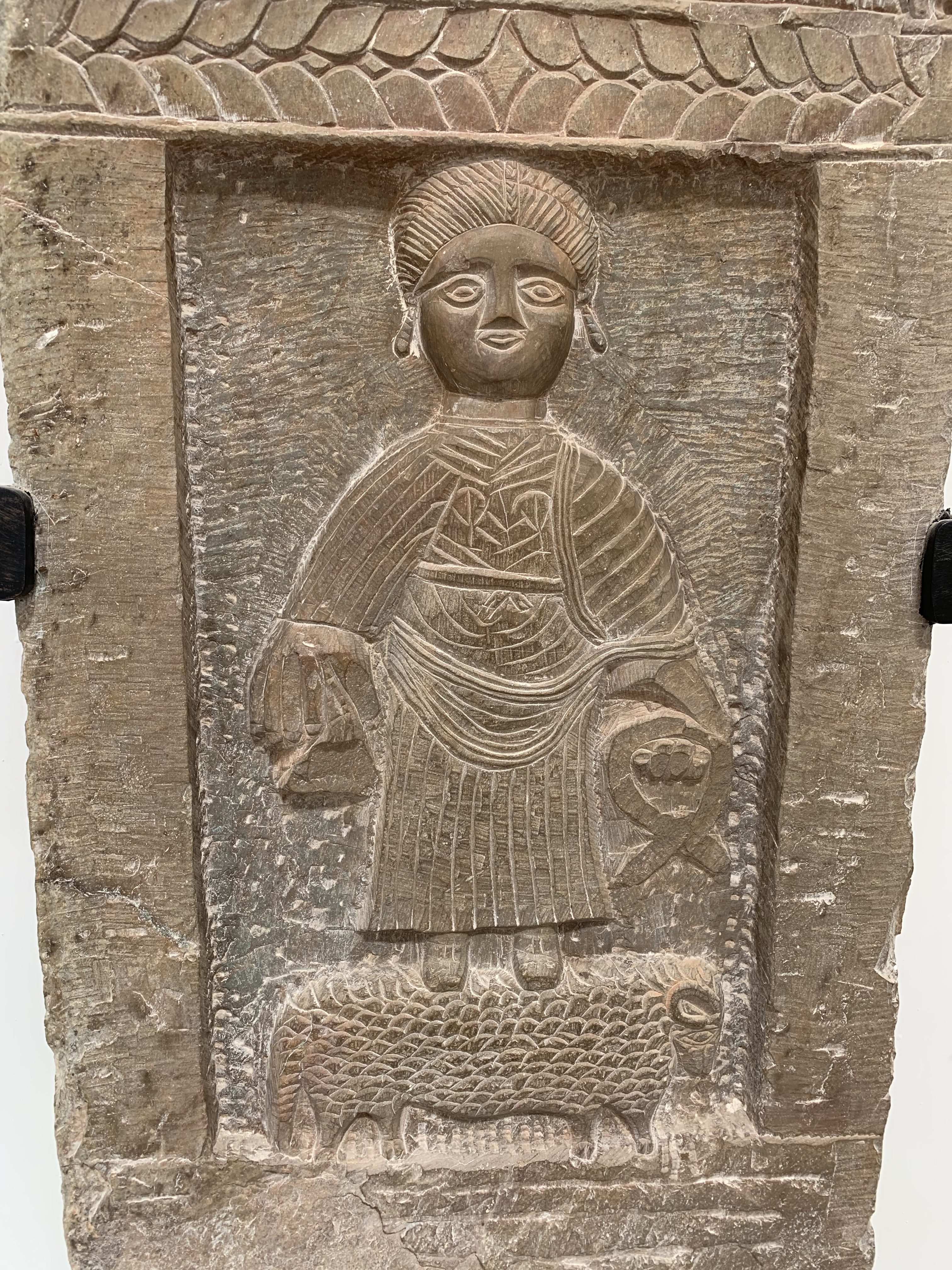
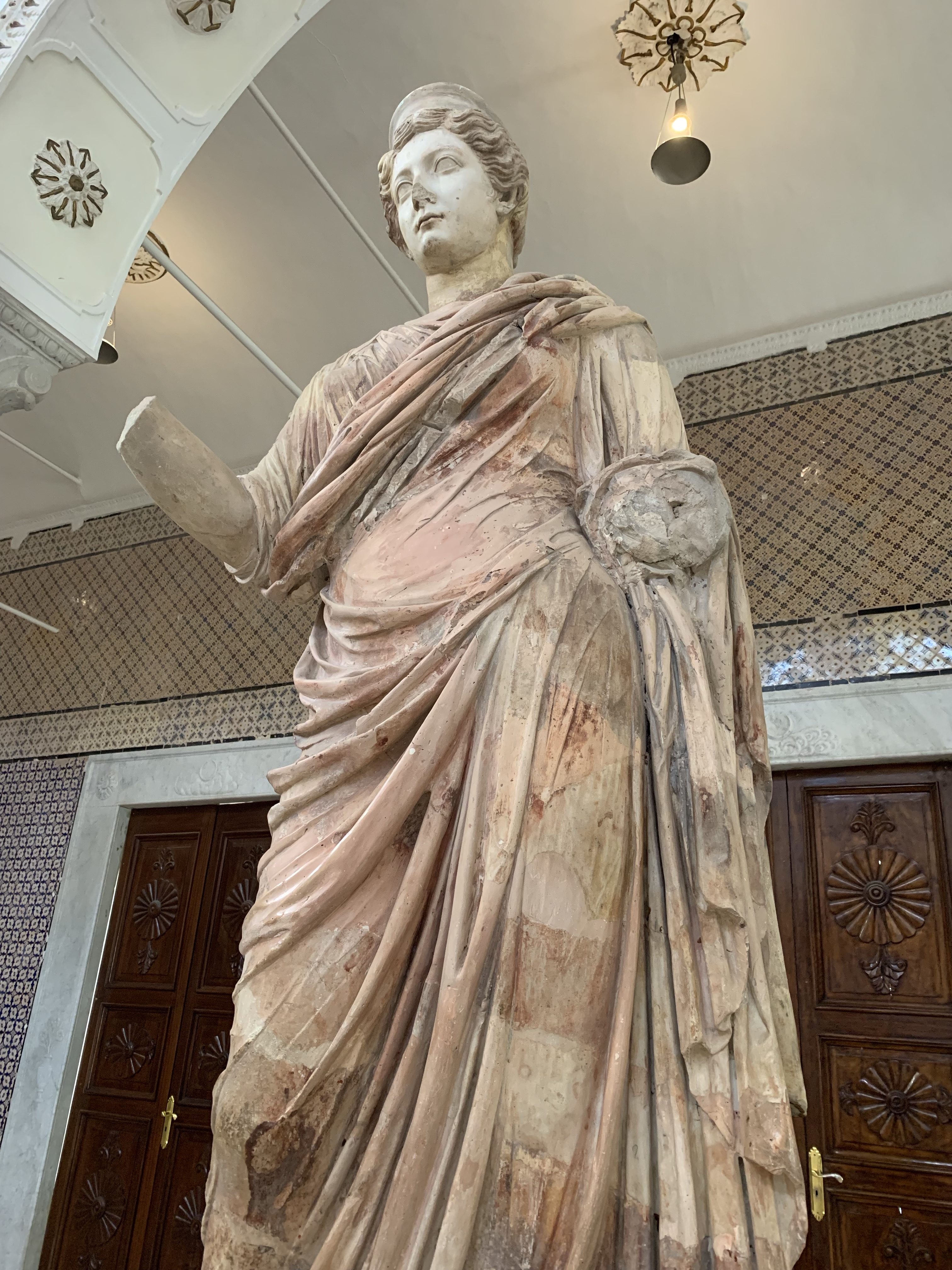
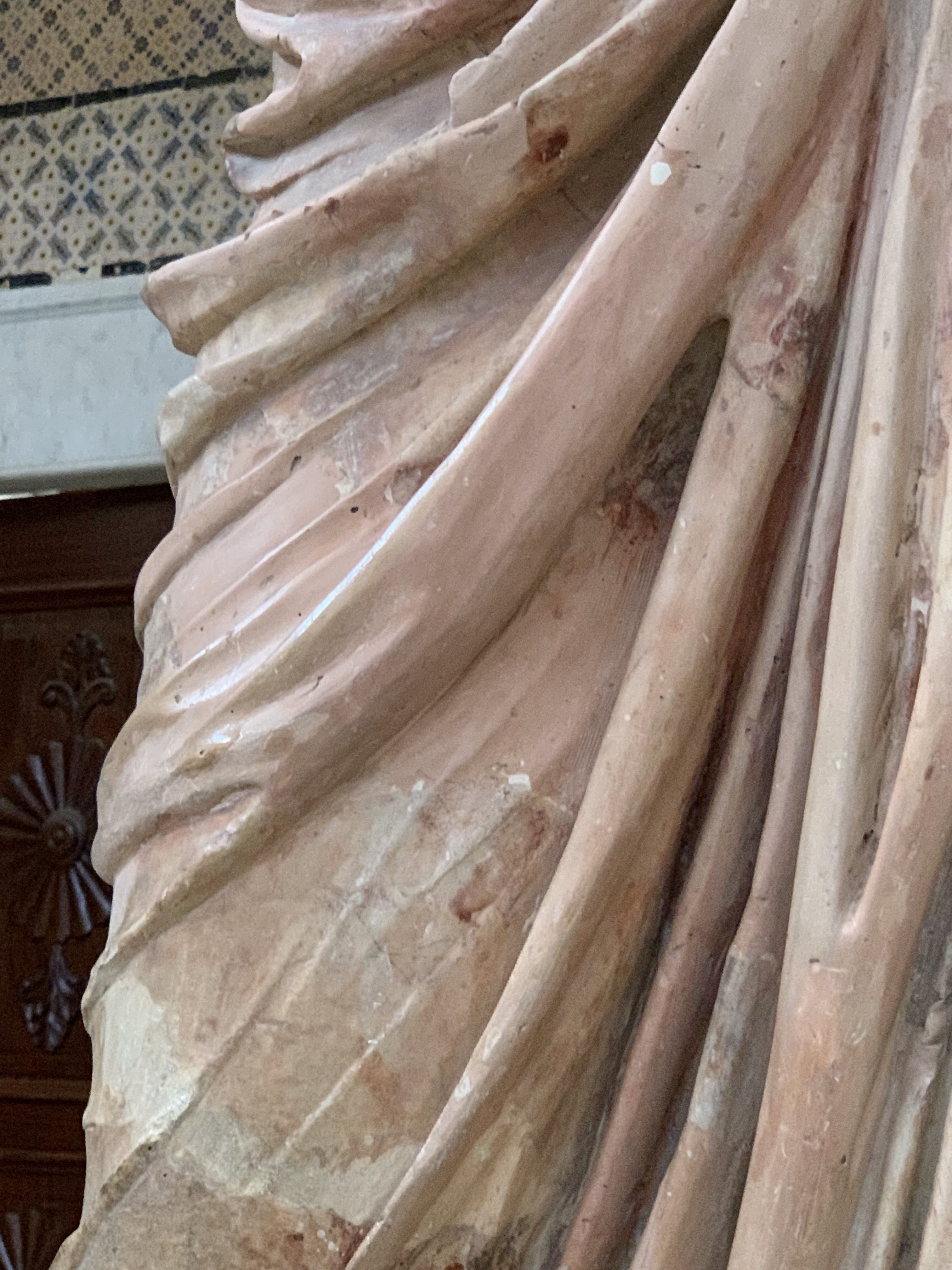

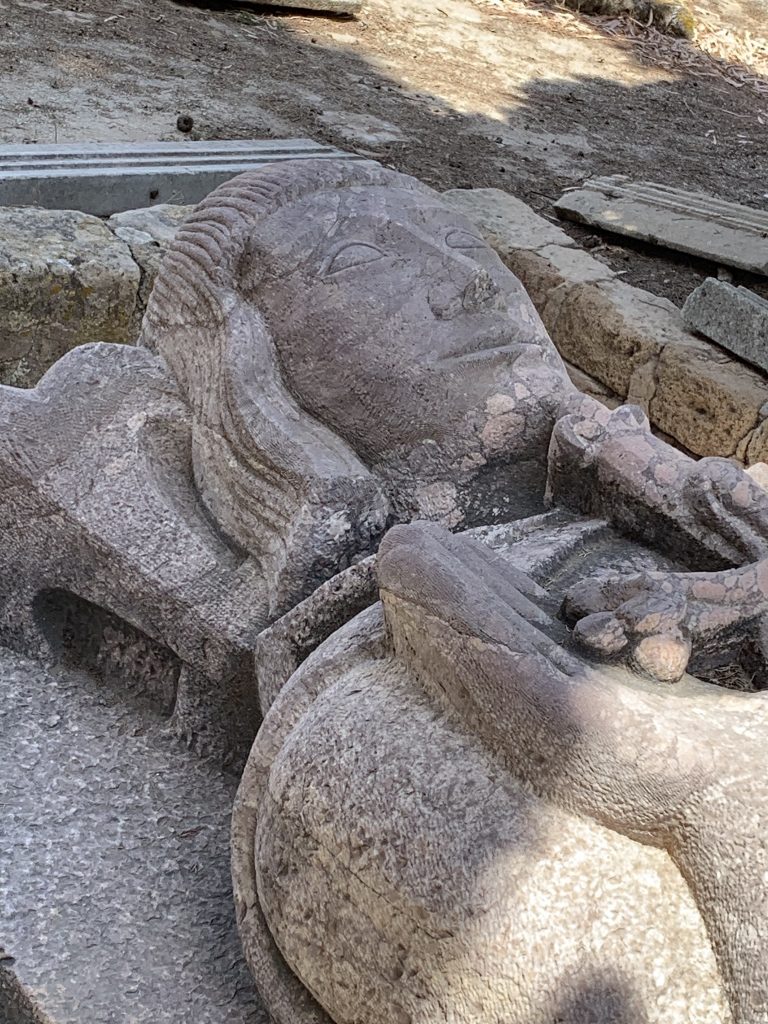
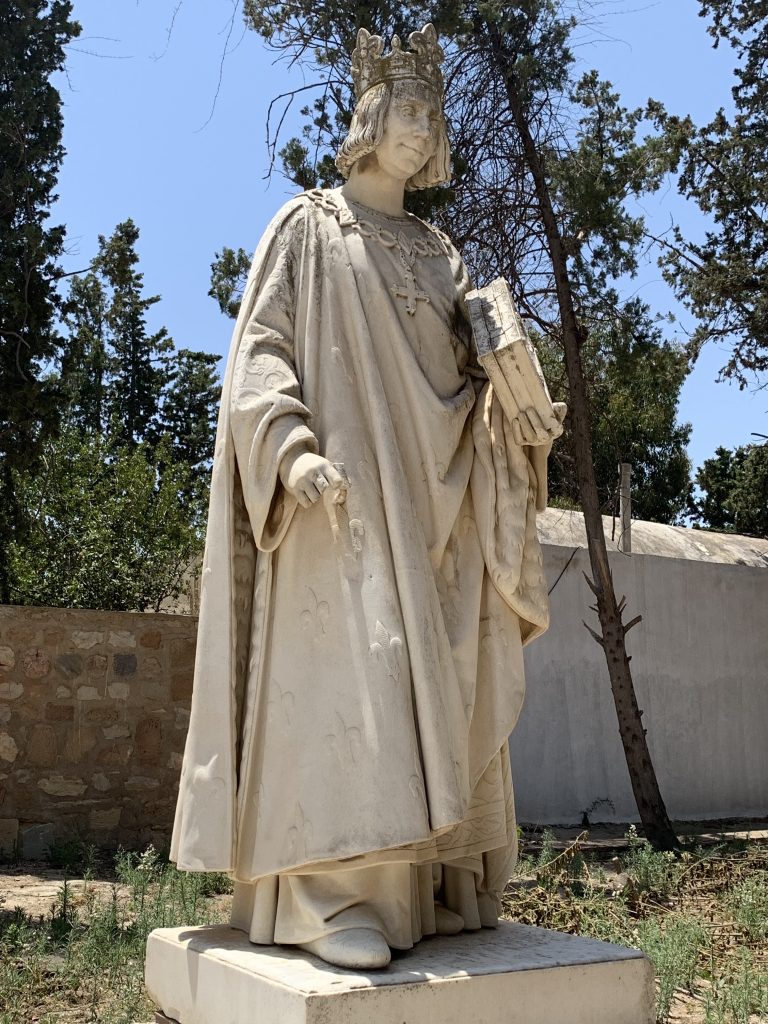
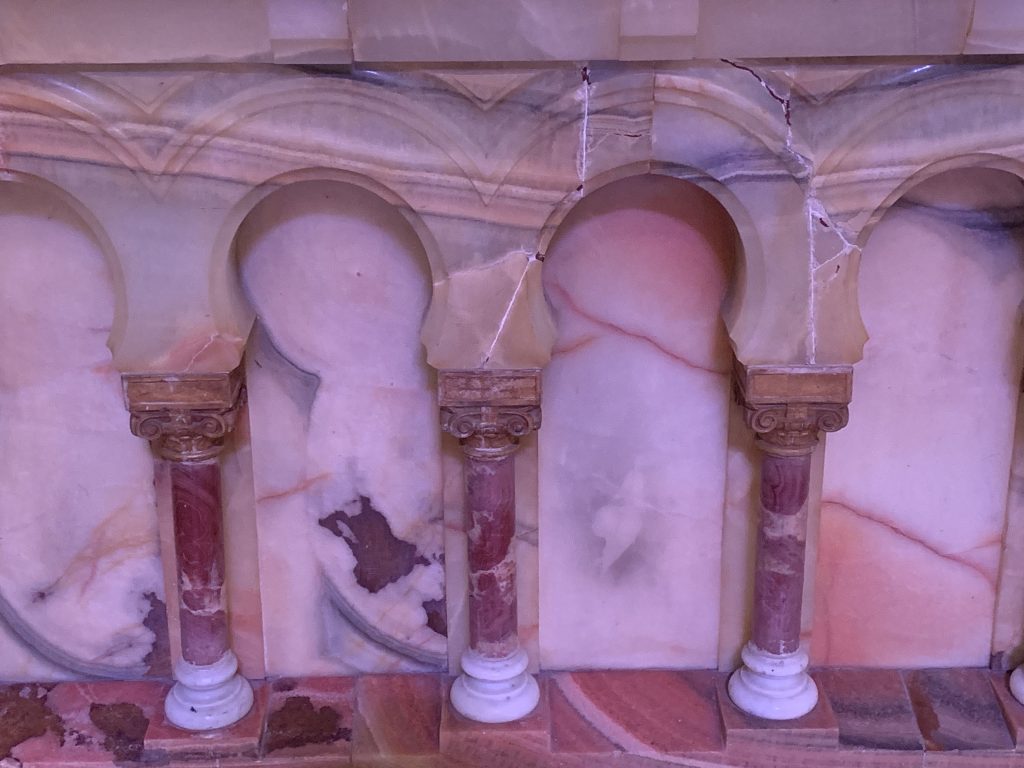
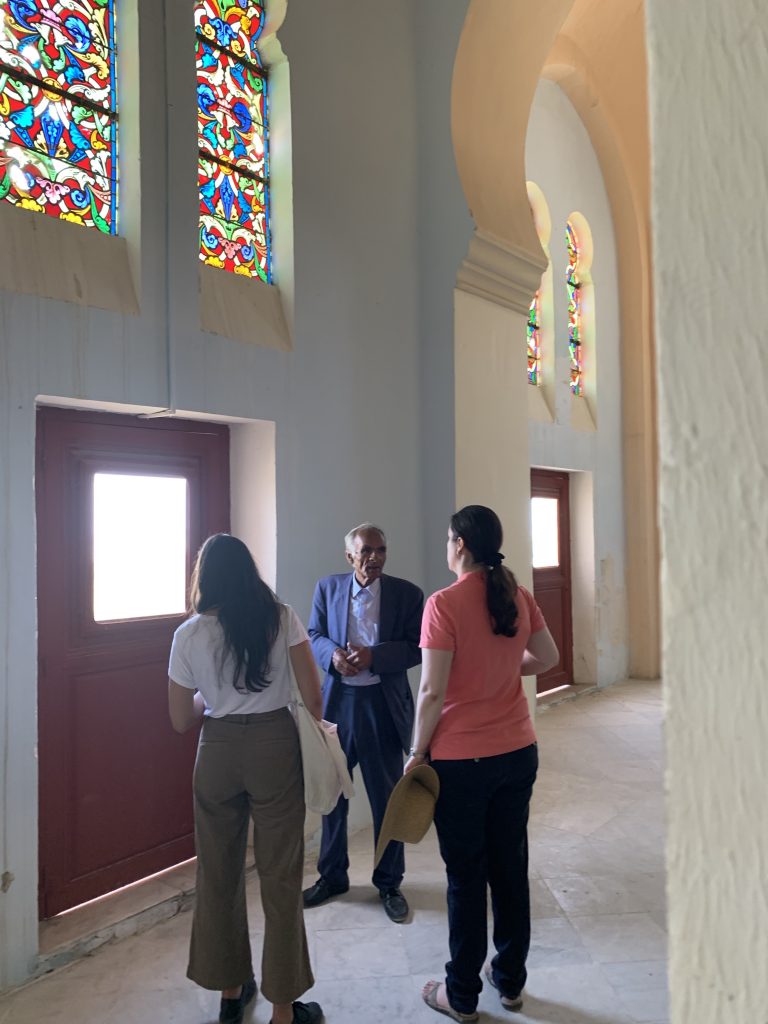
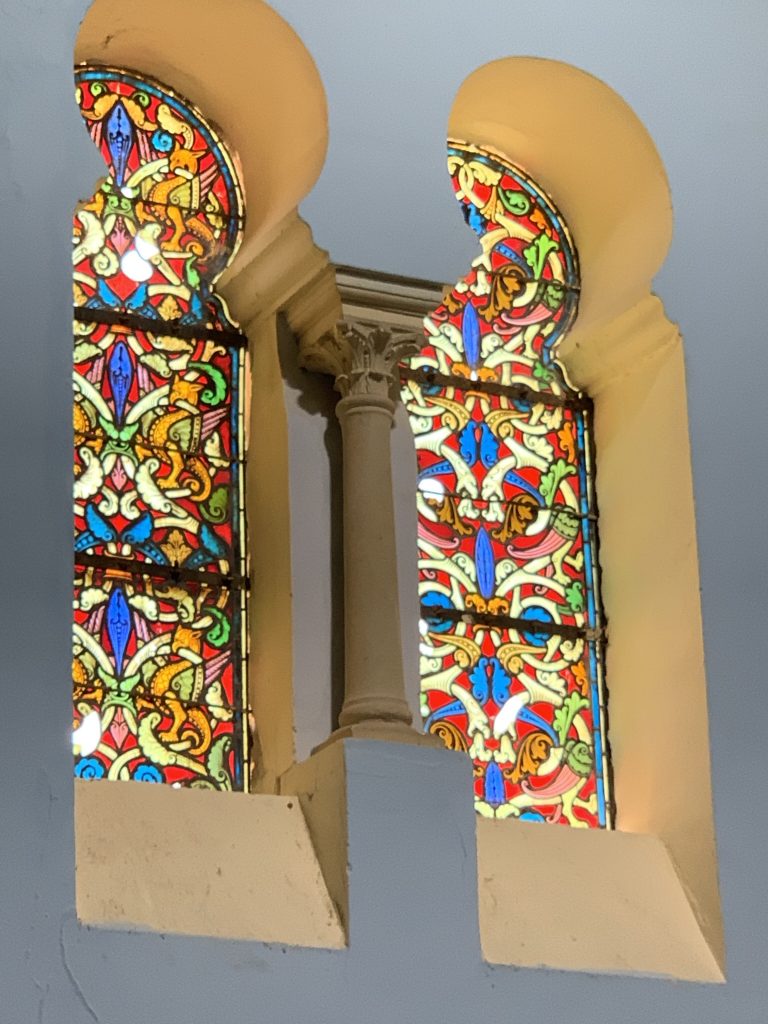
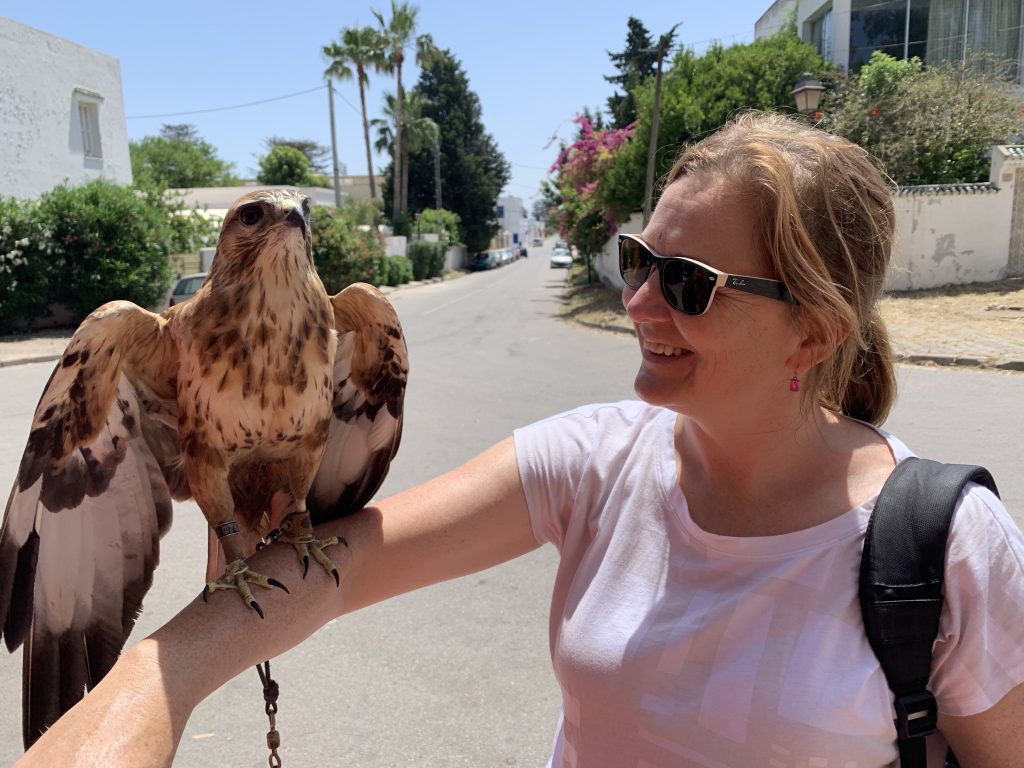
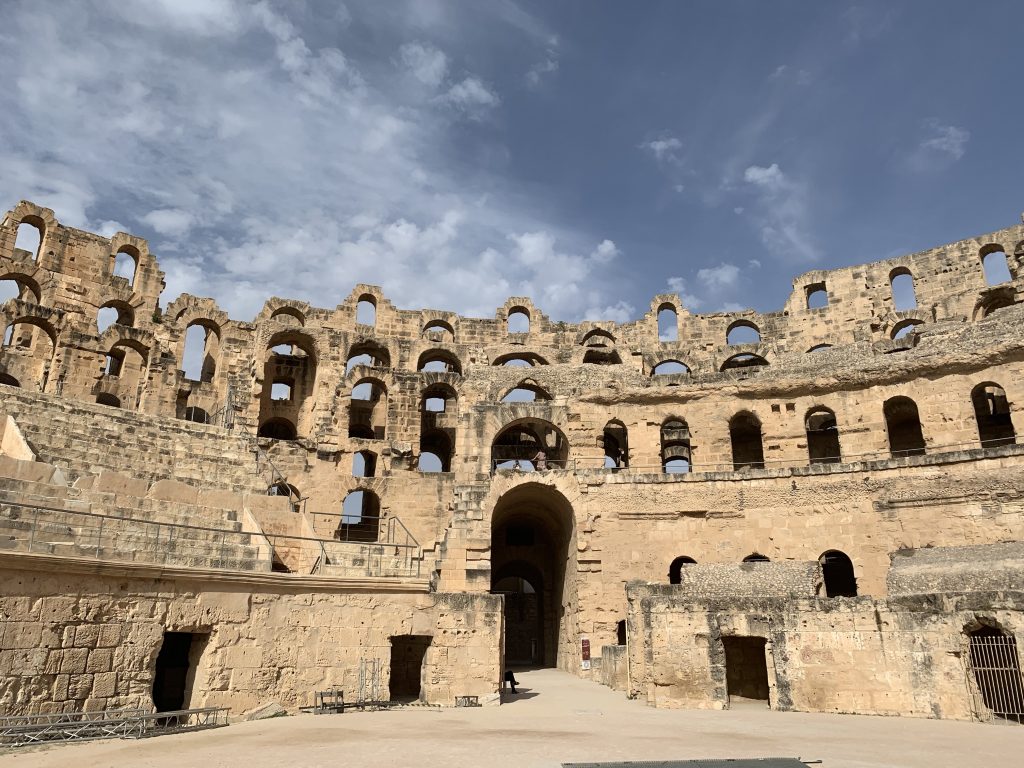
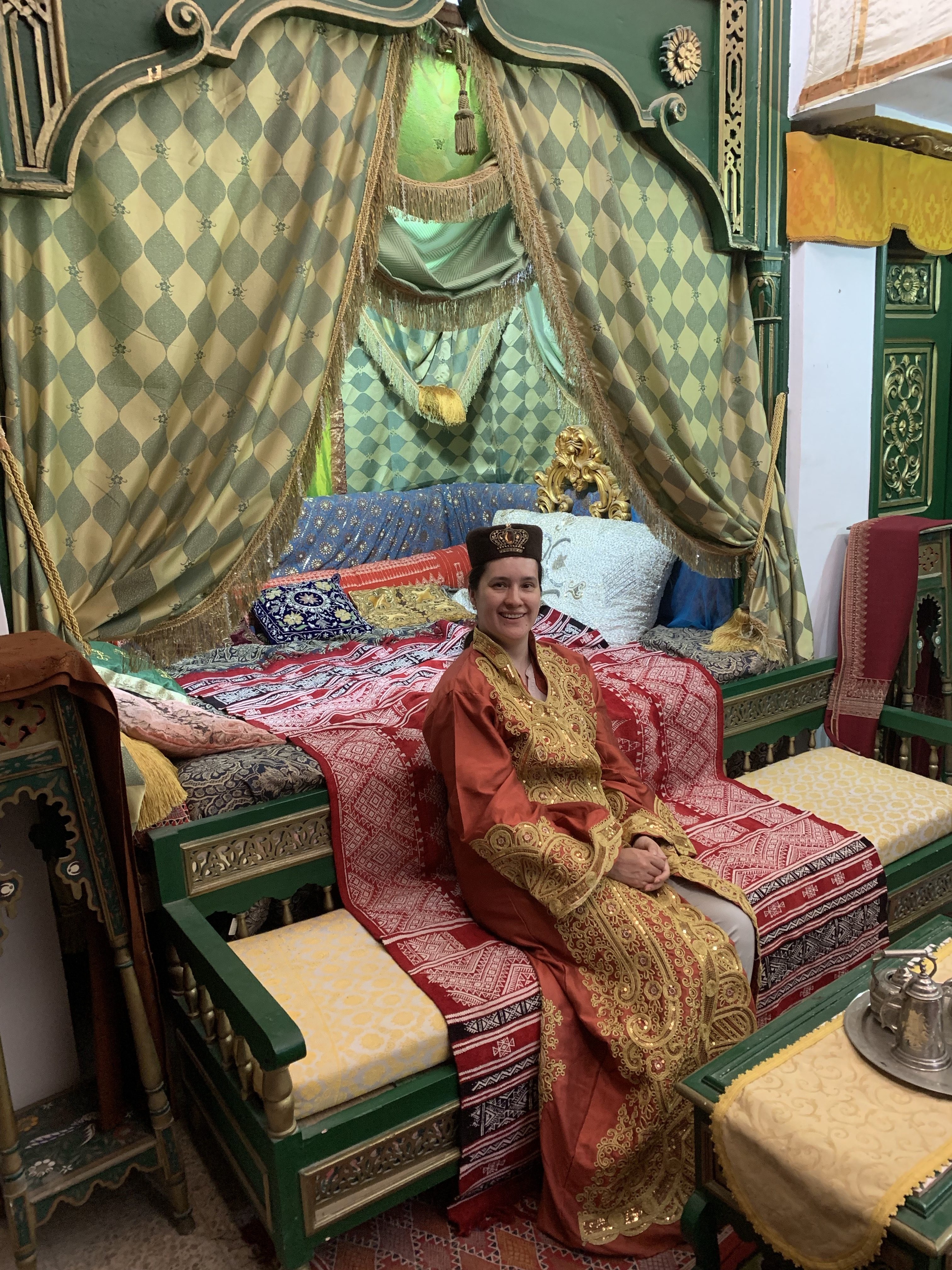
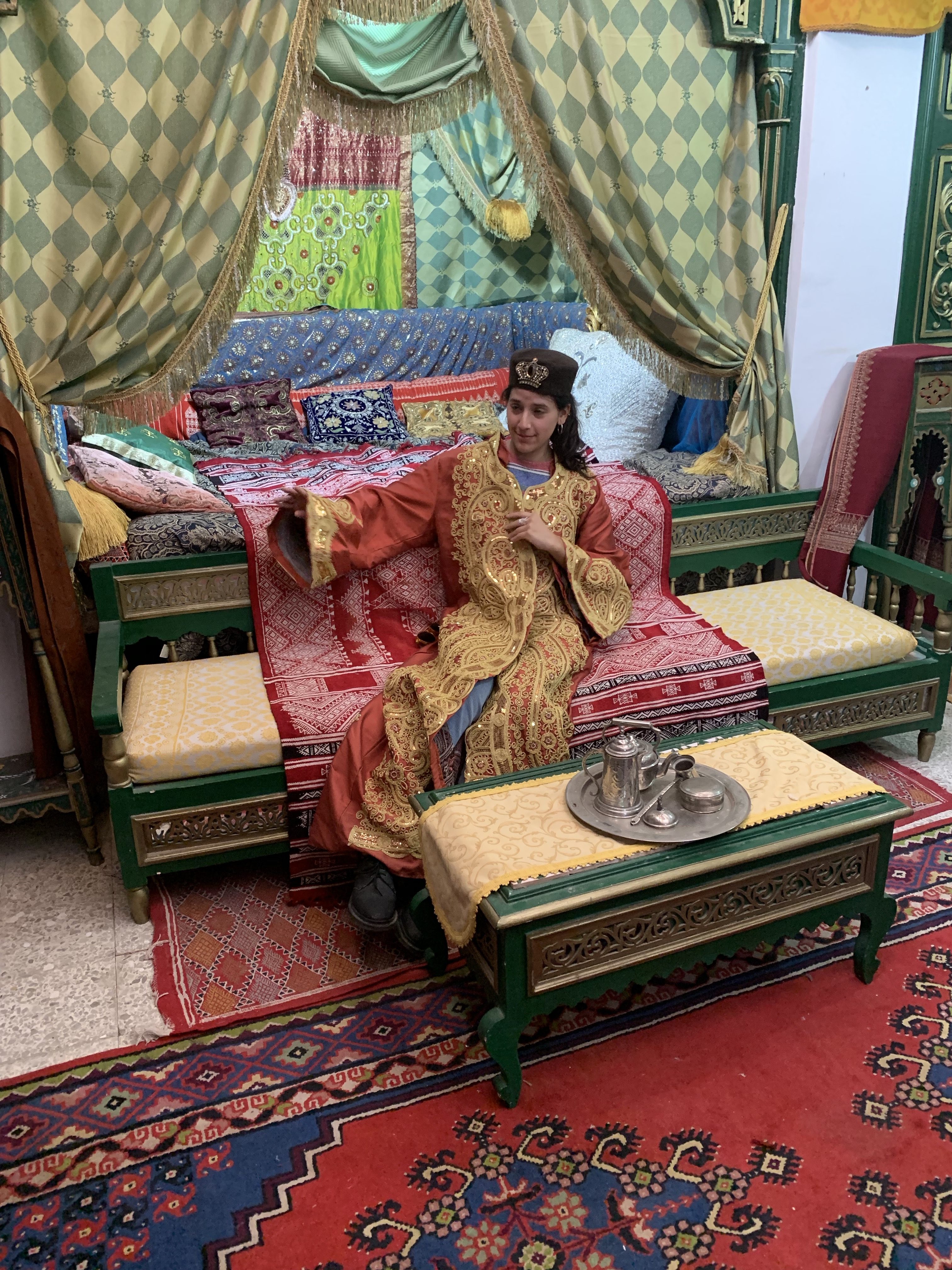
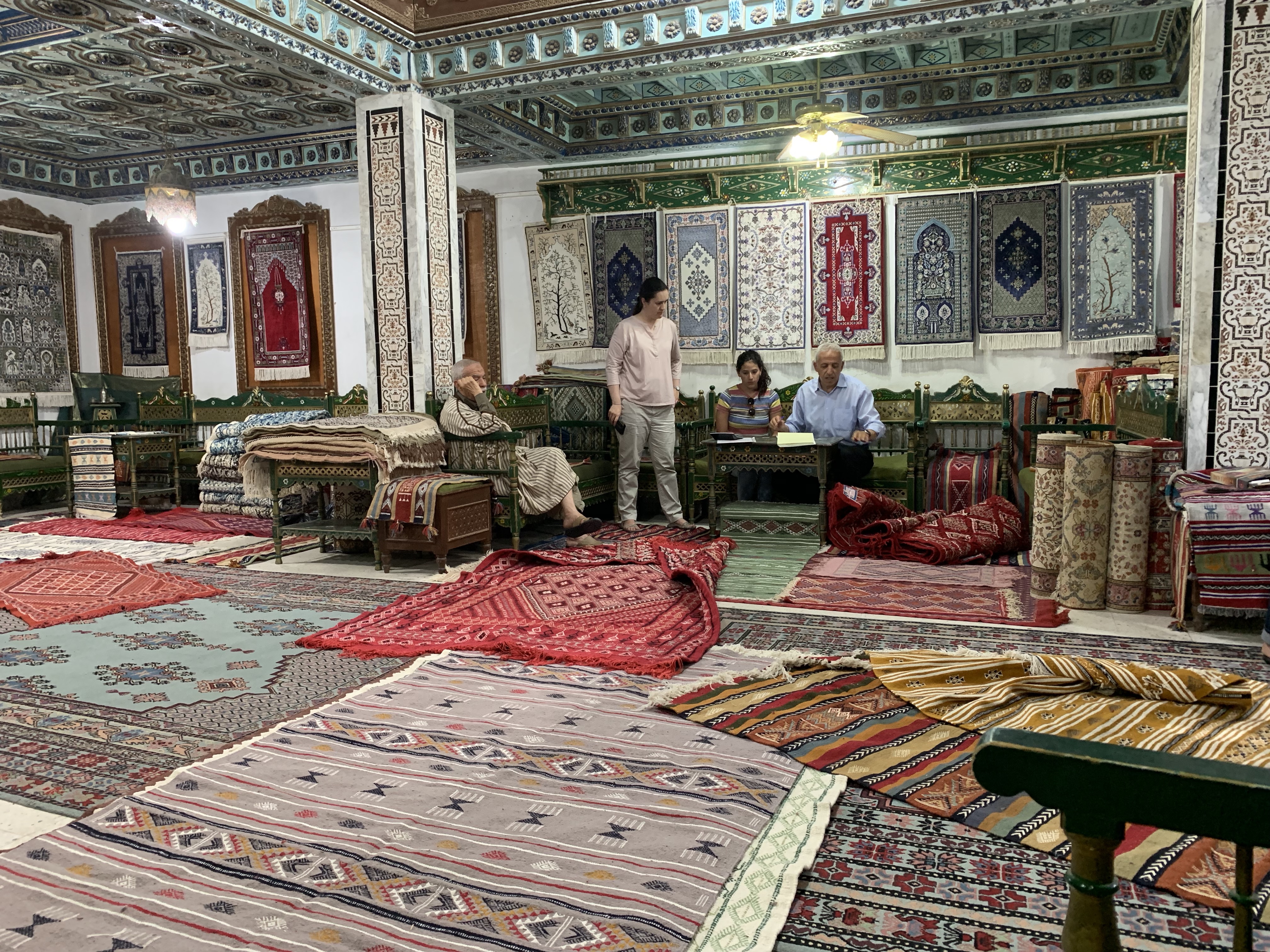
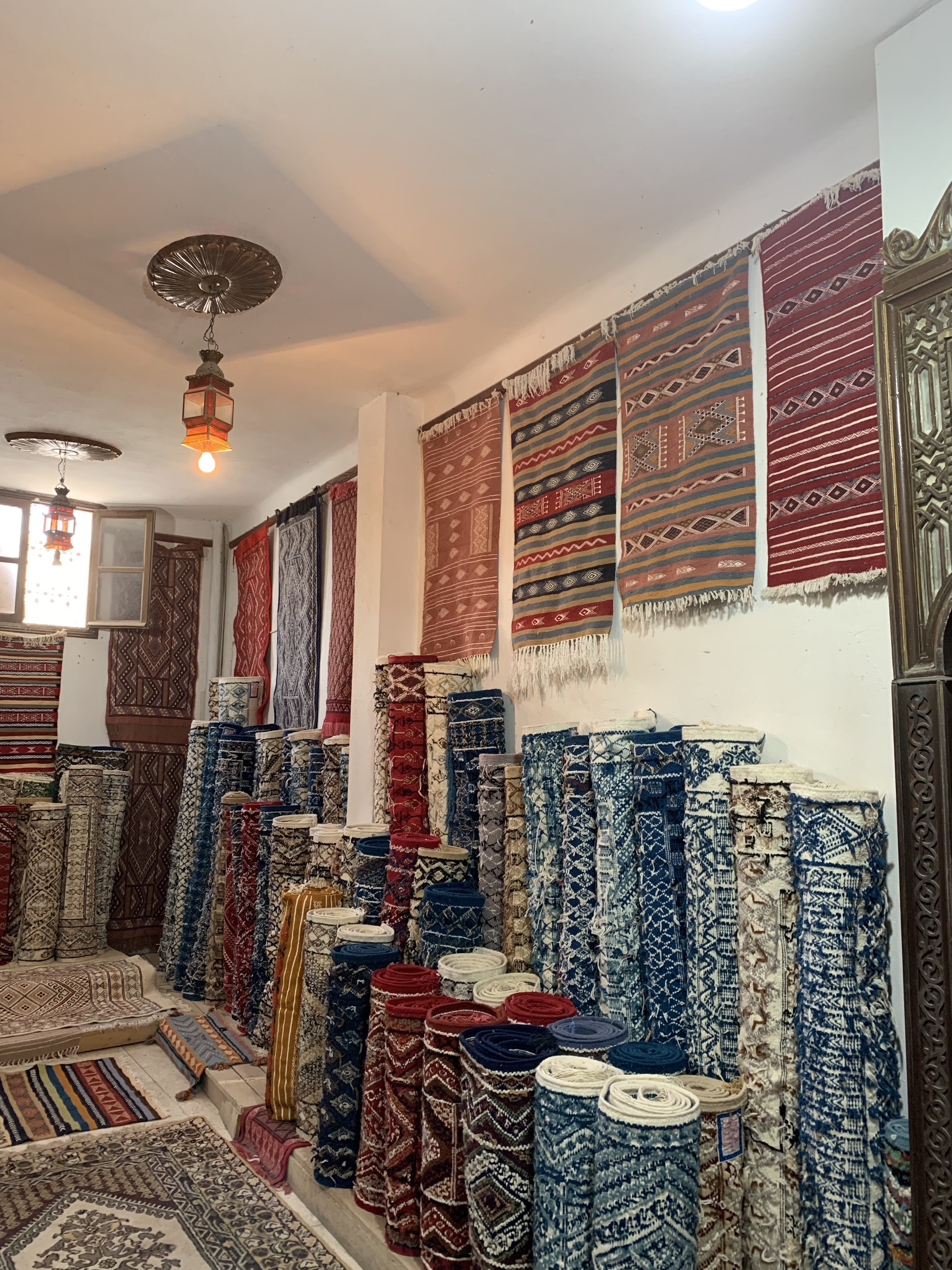
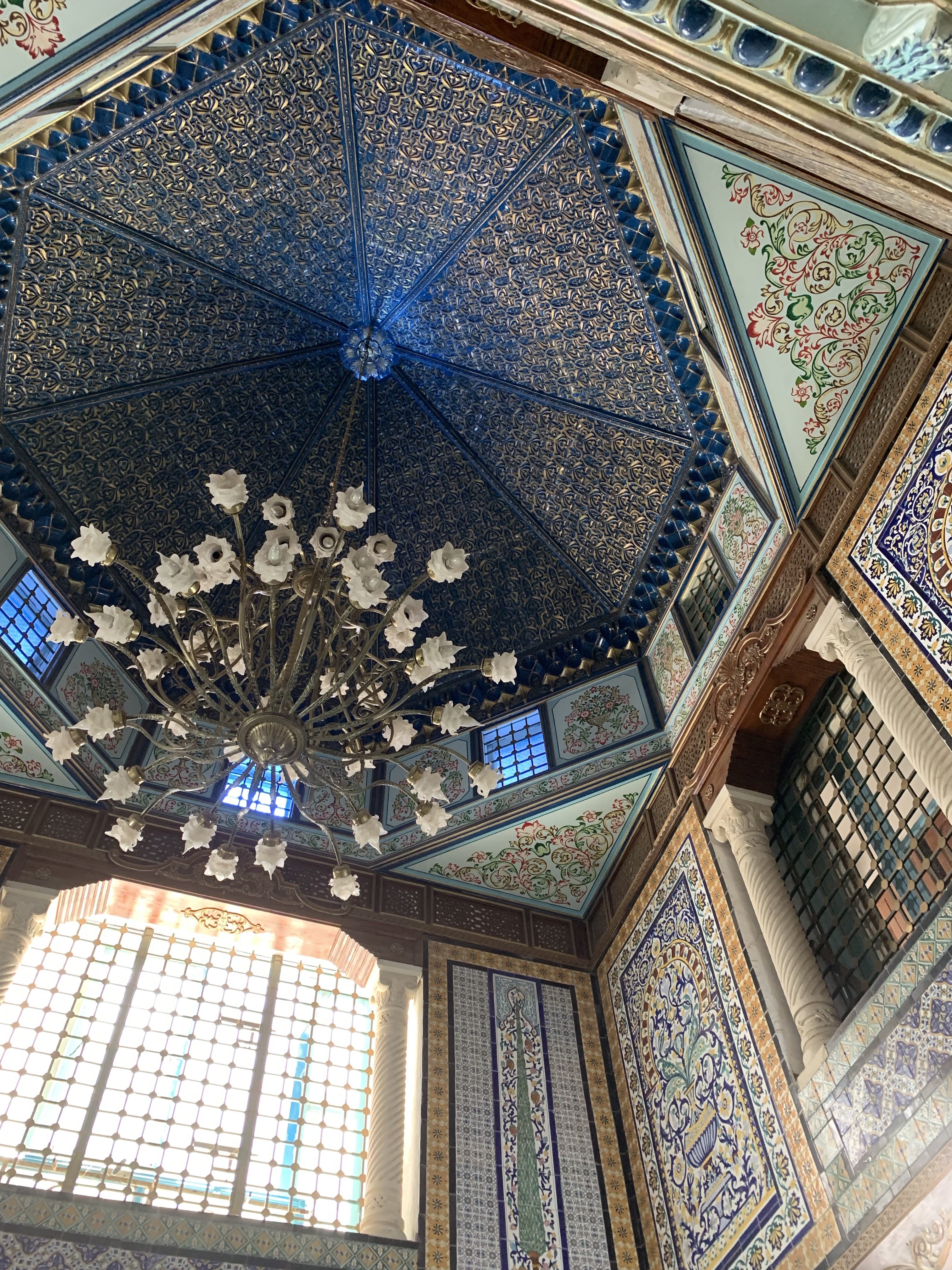
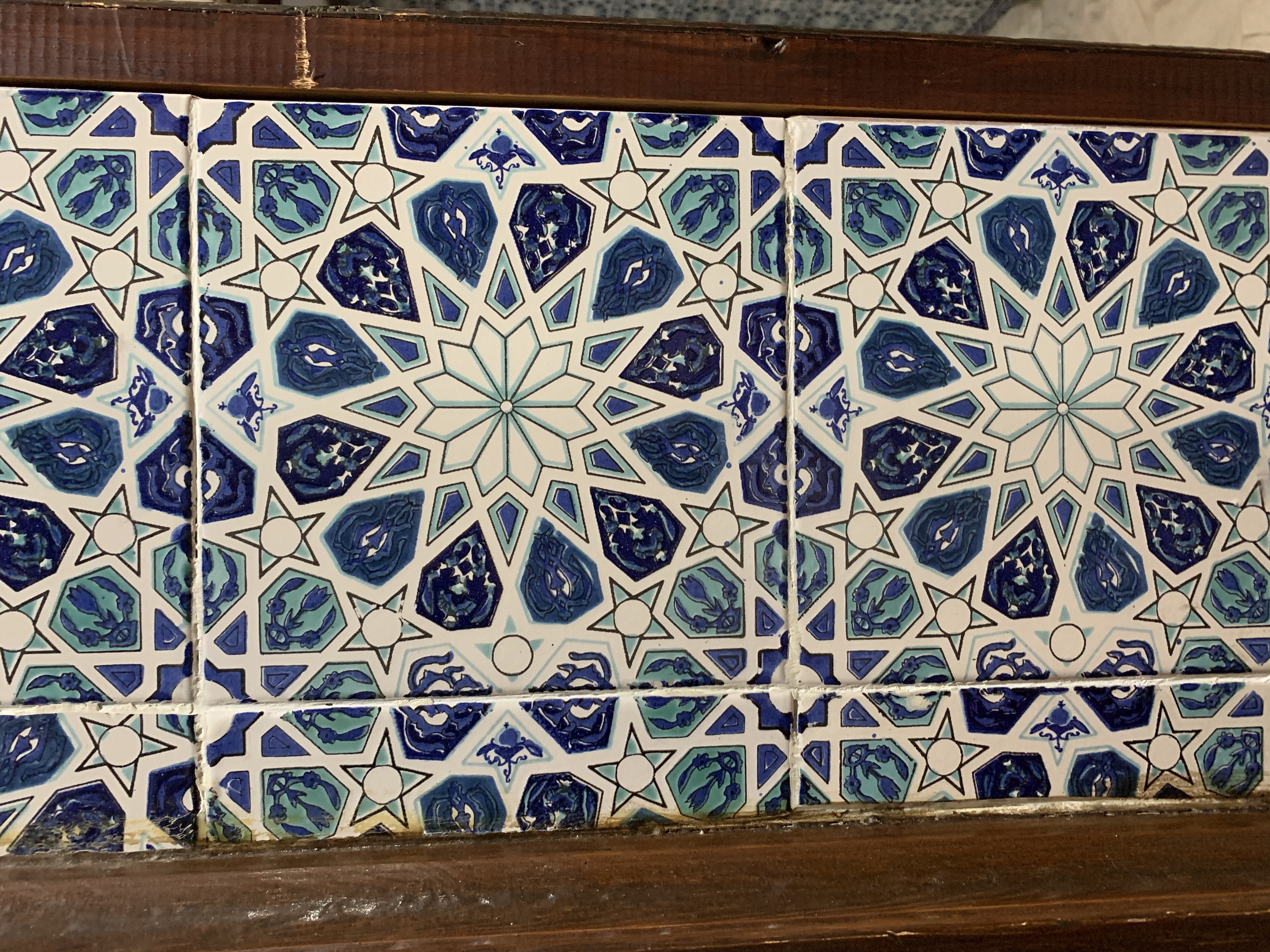
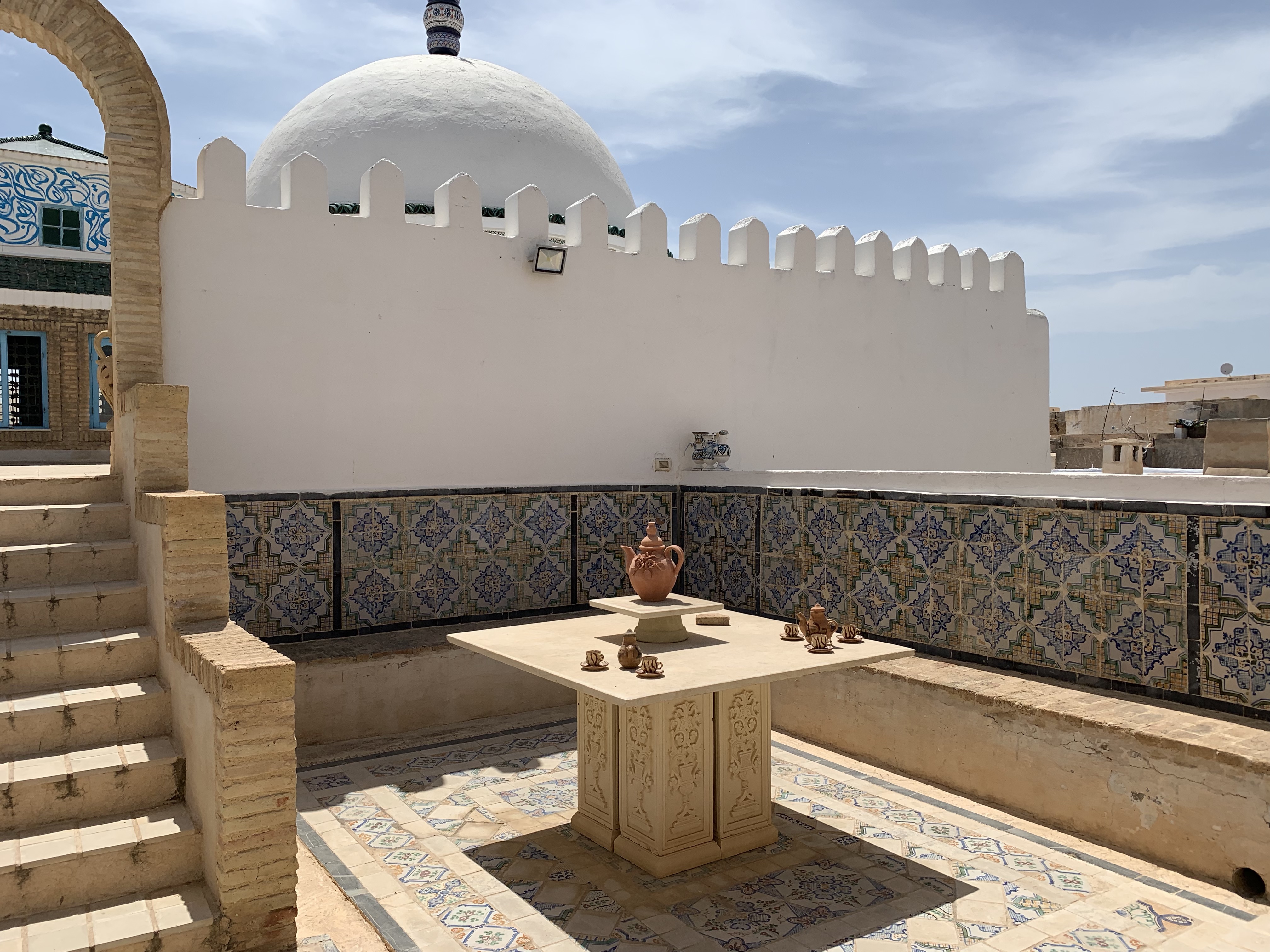
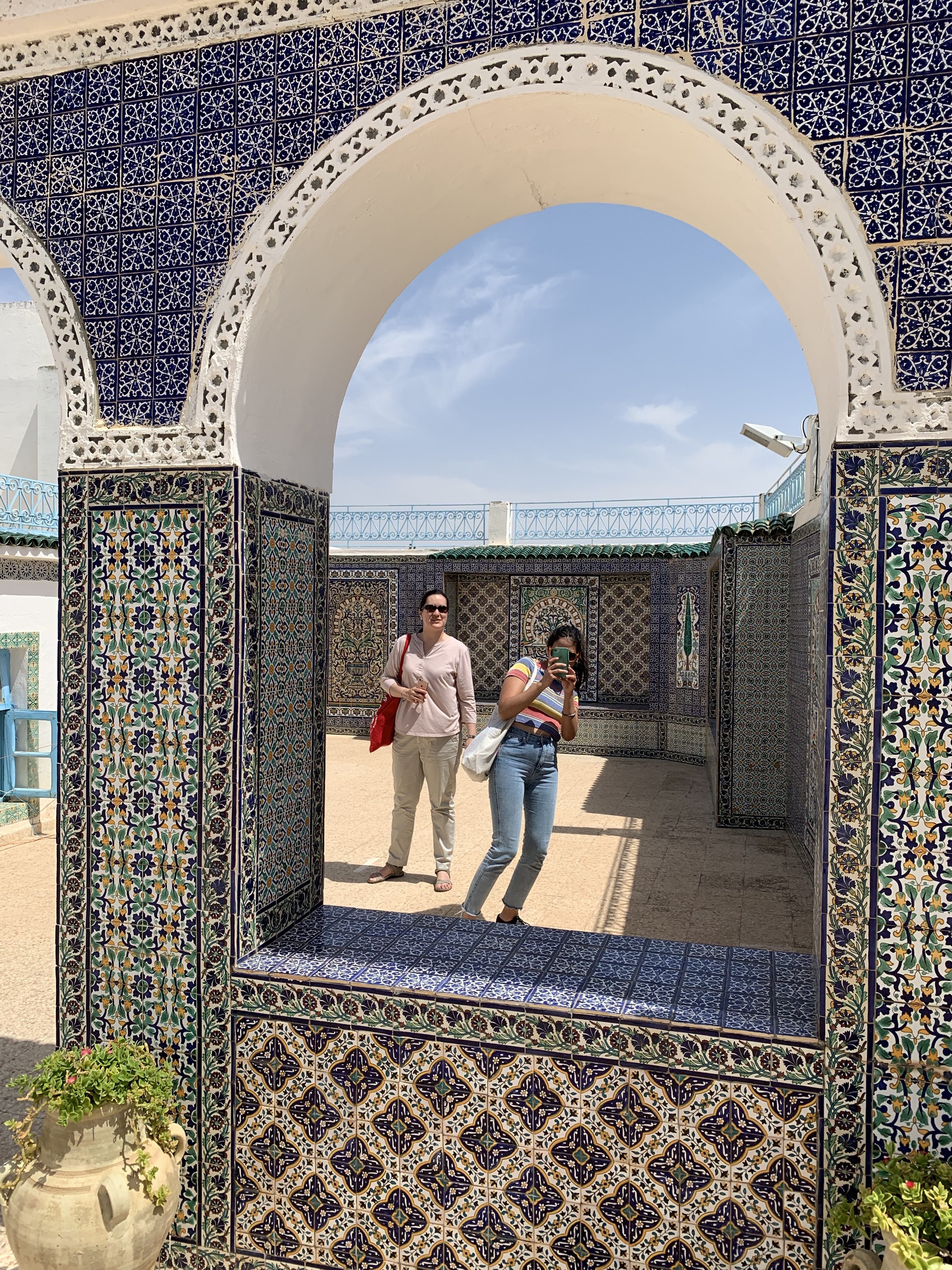
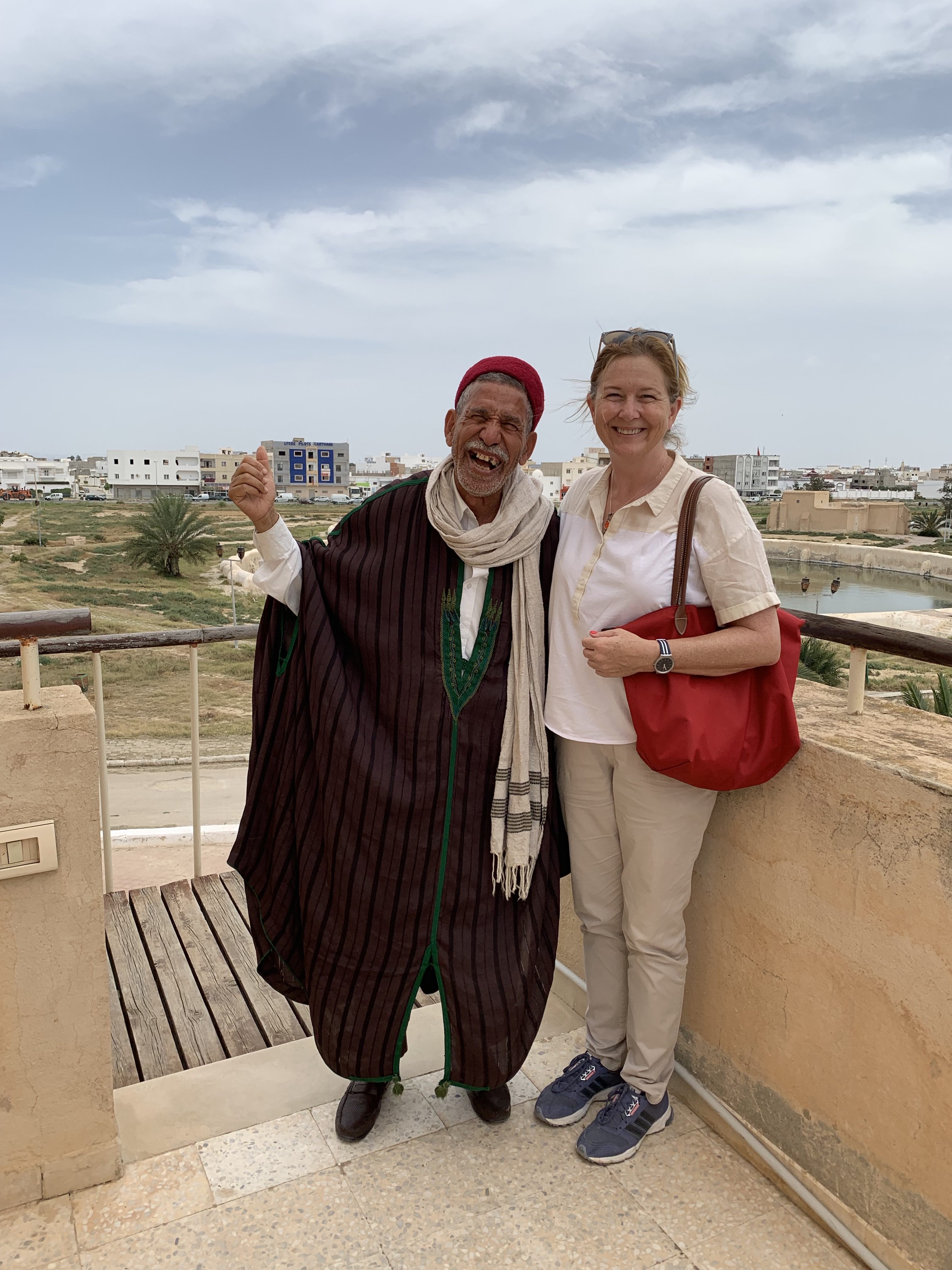
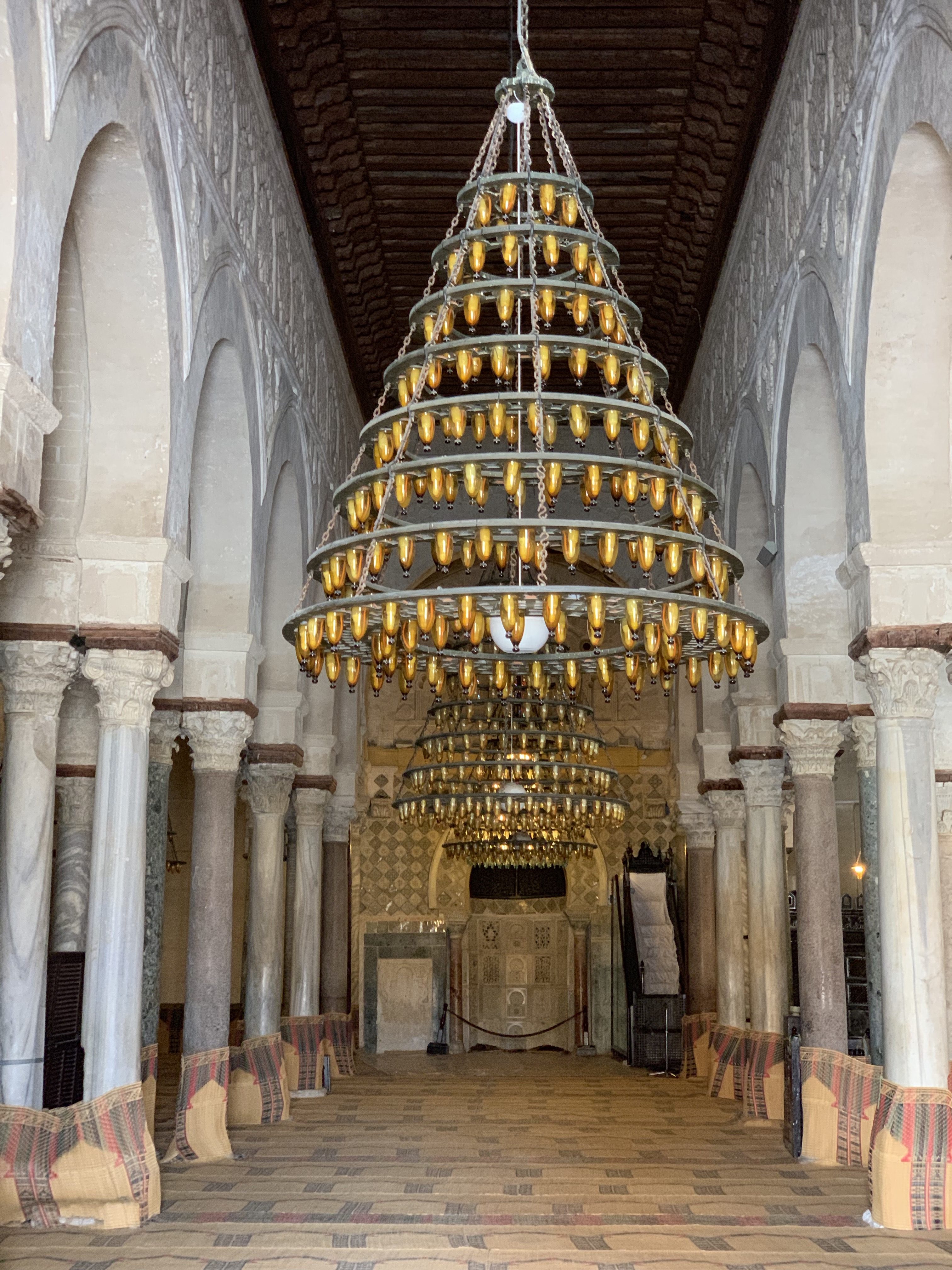
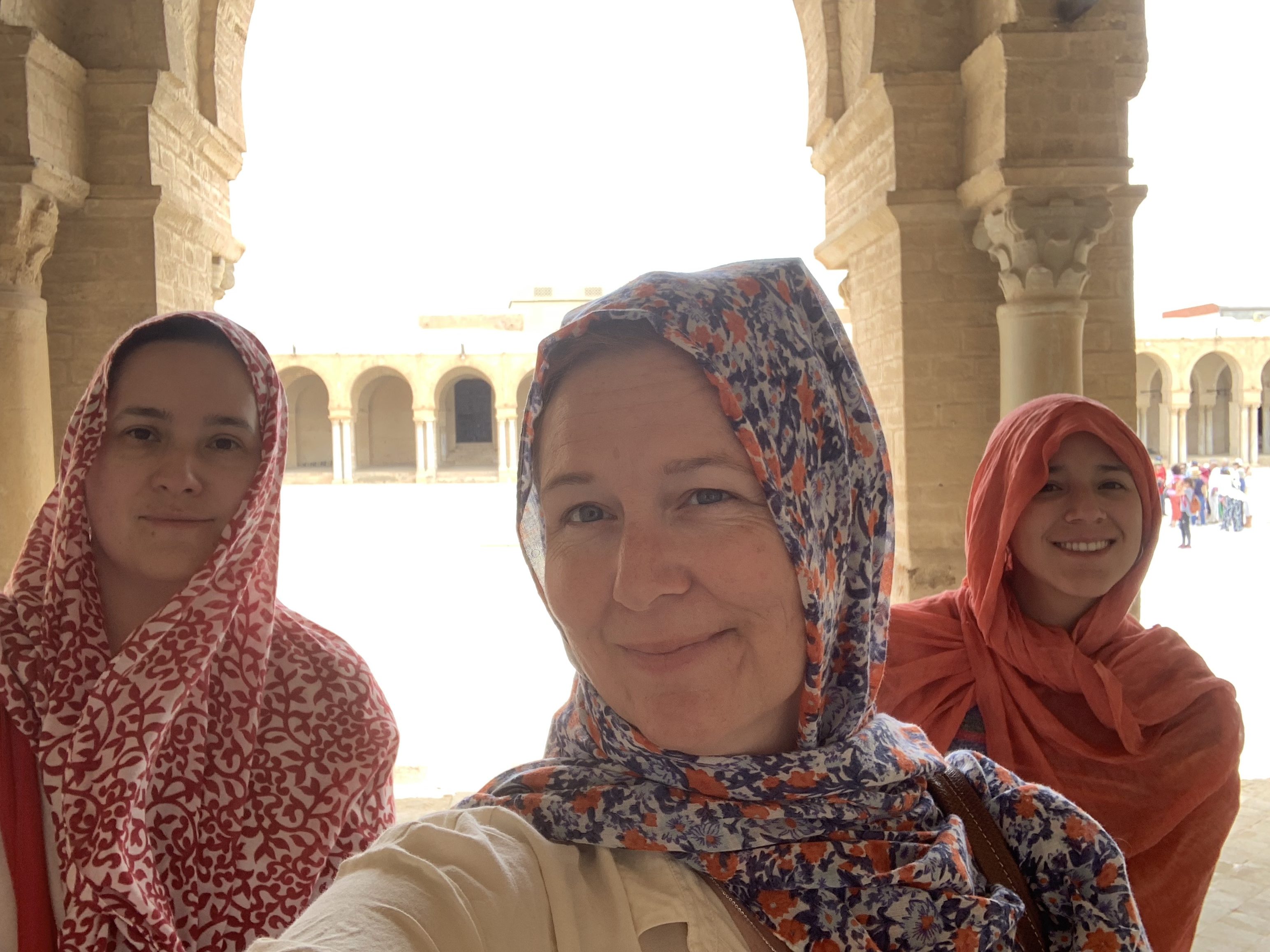
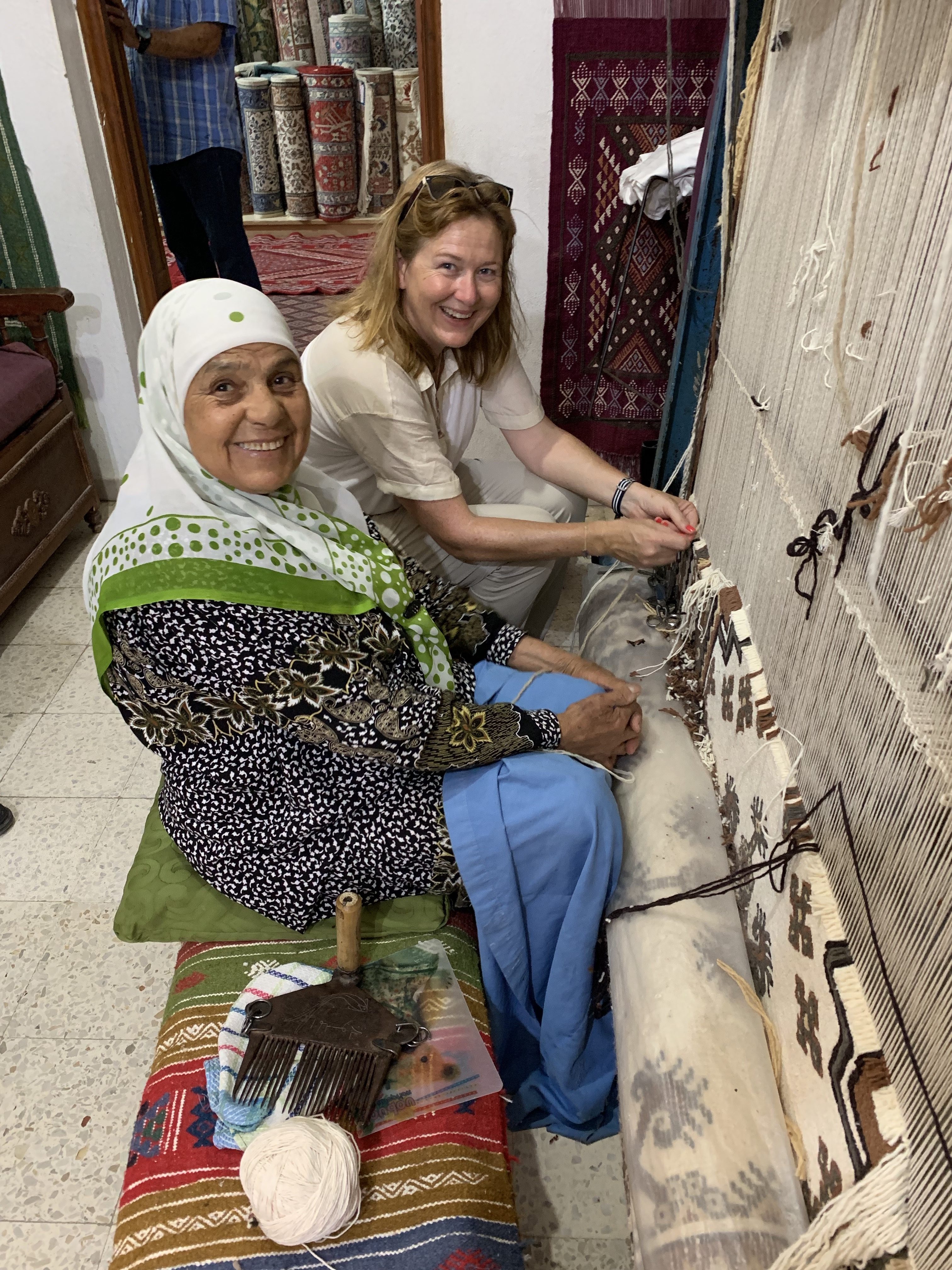
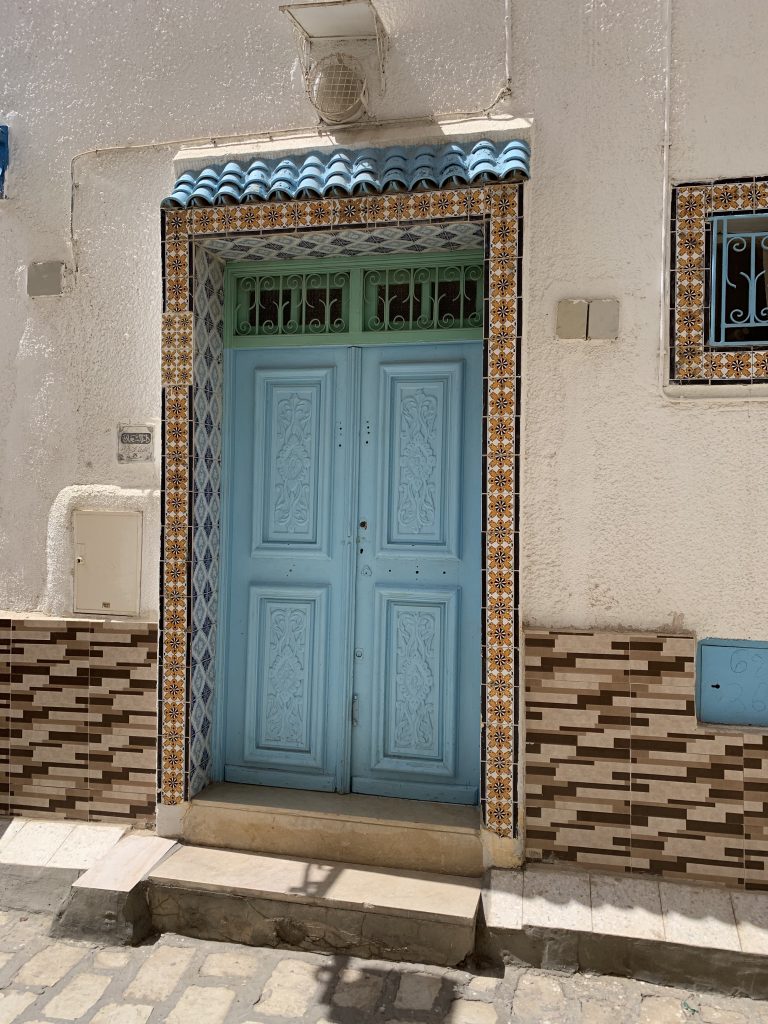
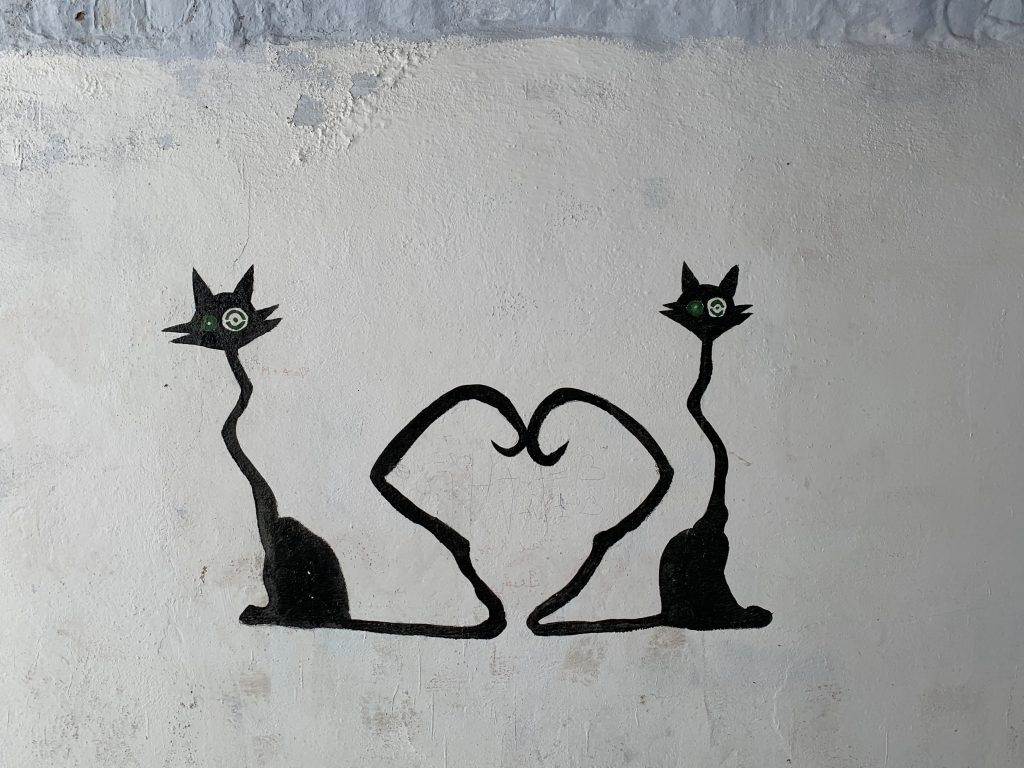
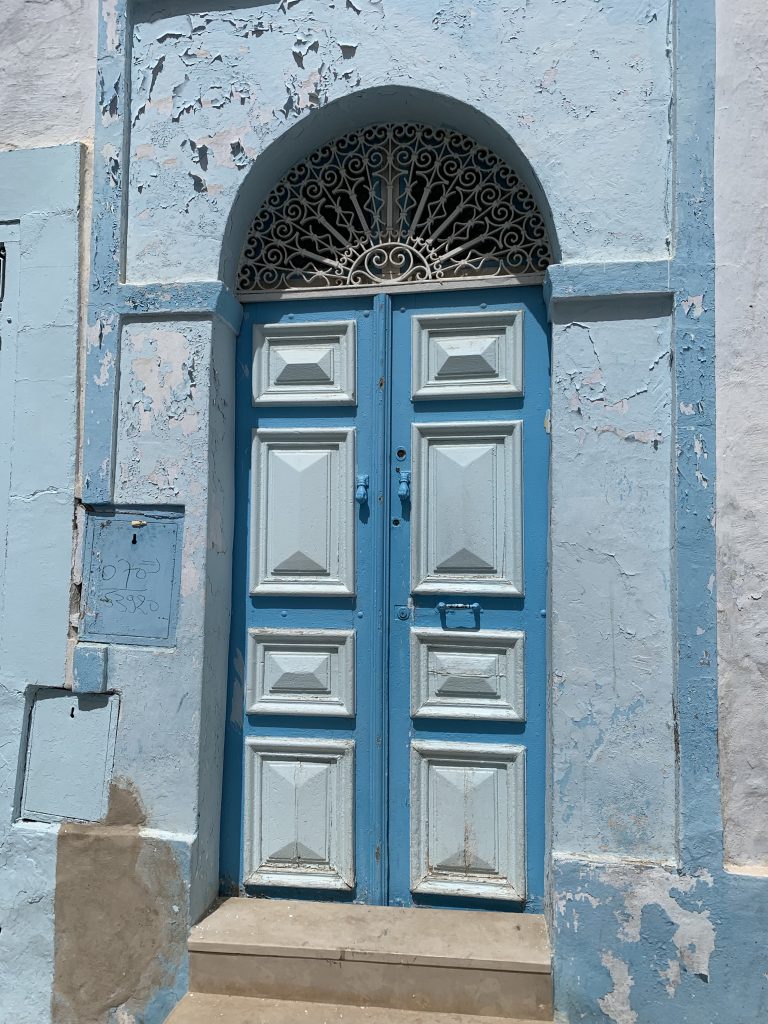
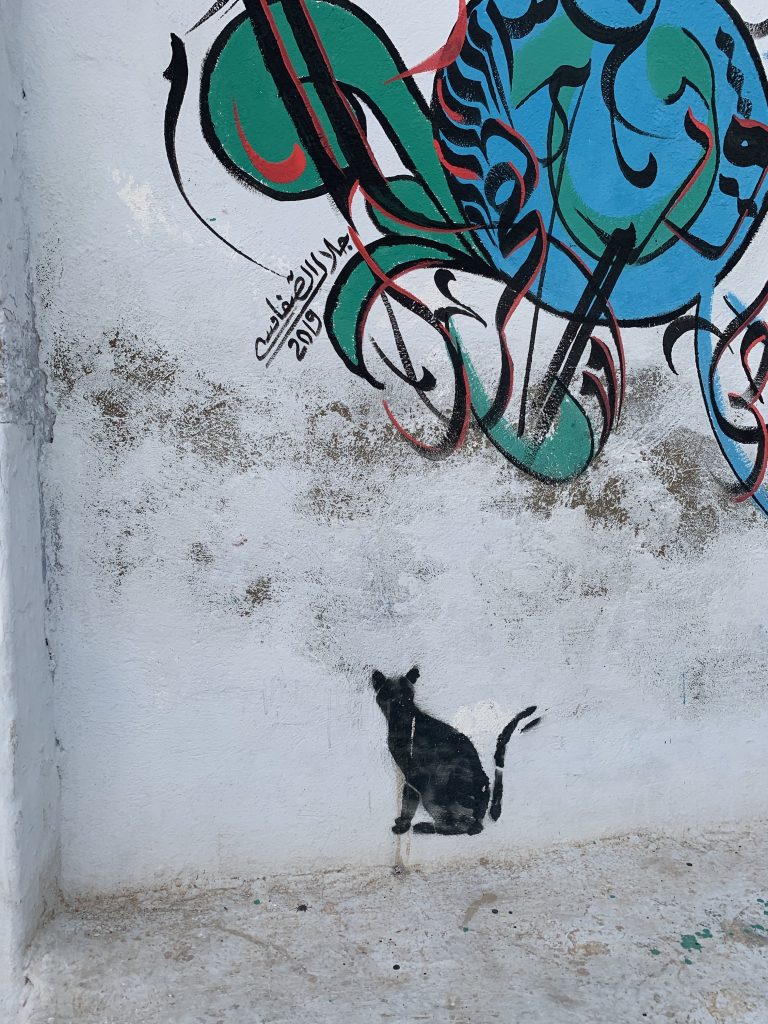
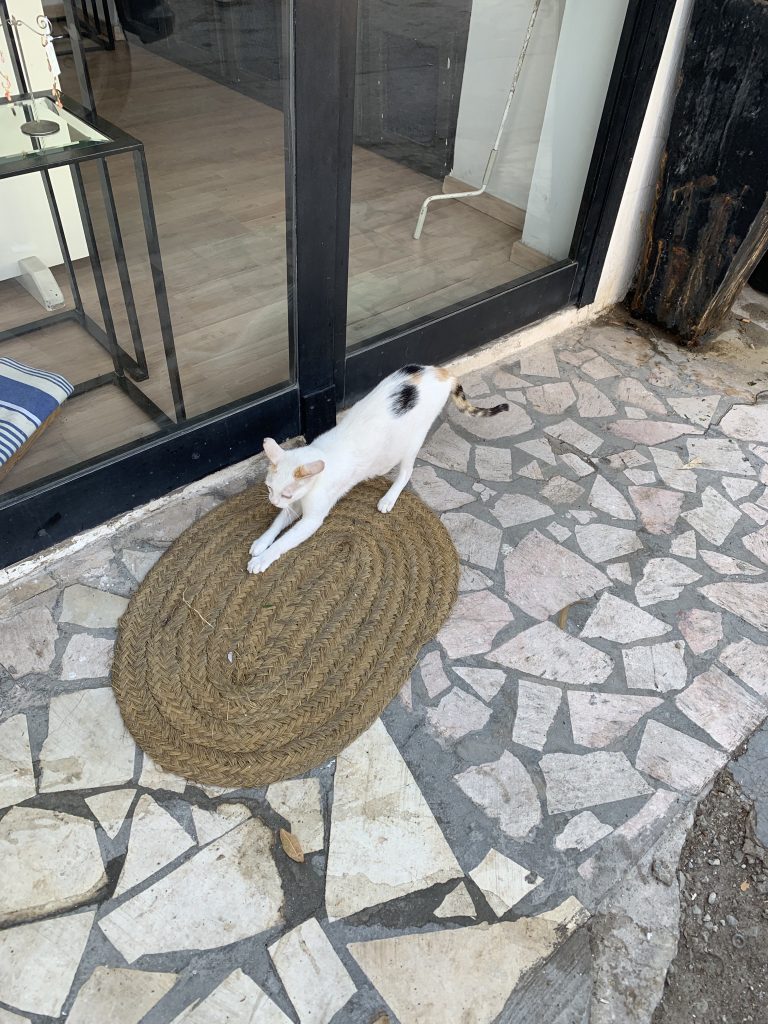
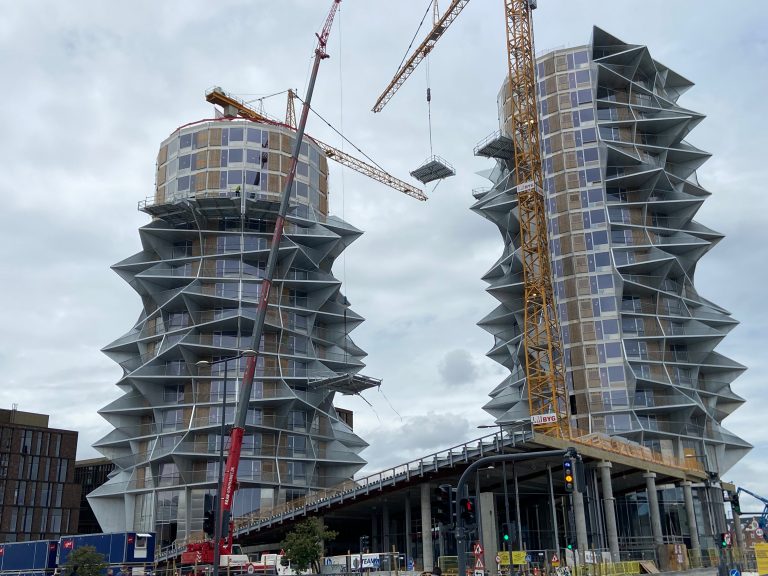
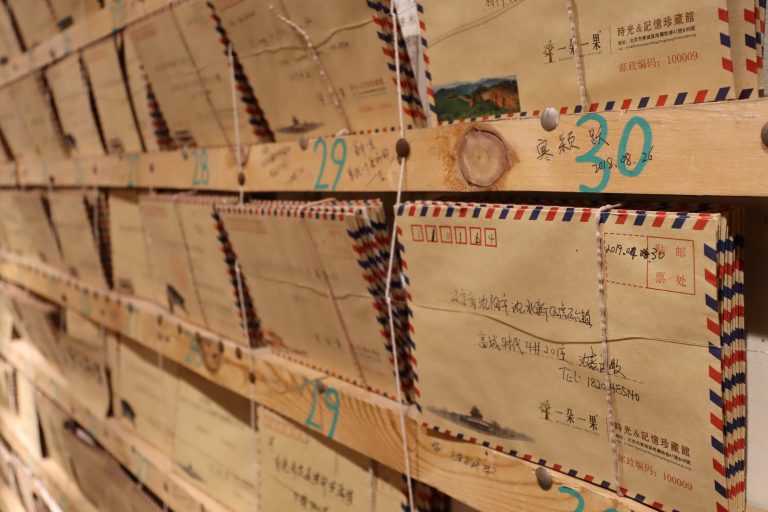
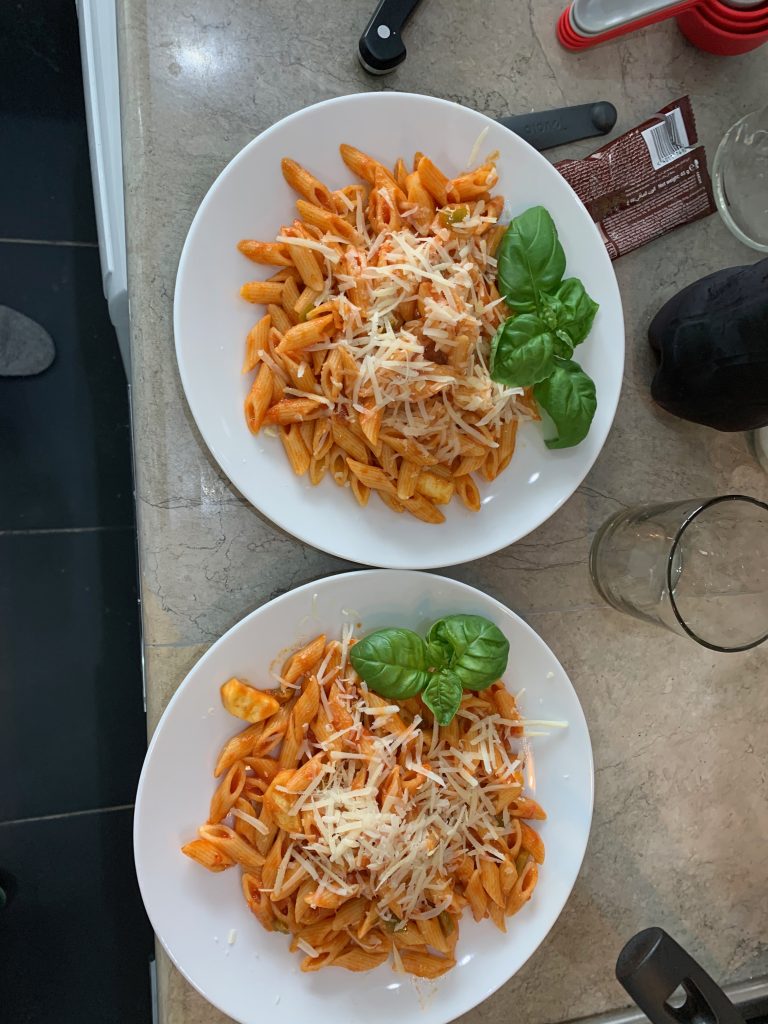
Leave a Comment